The Reviews
I am a Law and Order junkie. I was and still am a fan of the old NBC drama from the nineties through the early oughts. It was FABULOUS!!! You don’t last over 20 years on the air in prime time without being the absolute shit! When I was in high school, I would watch the re-runs on TNT and marvel at the way the show portrayed the city. I would get excited if they shot a scene on a street that I just walked on or a place that I knew and had frequented. It was even more exciting to actually happen upon them shooting downtown near the Brooklyn Bridge where the old majestic courthouse was and is. I would always try not to gawk and play it cool all the while searching to see if I could see Jerry Orbach (the actor who played Lennie Briscoe) in the flesh. I loved me some Jerry Orbach! It was an awesome show.
So when a friend of mine whispered to me over cocktails that it was coming back, I couldn’t contain myself. Really? Could it be? I had to sit down. It was and is true. Law and Order is back! I am beyond excited.
When I was young, even though I loved the show, I didn’t really understand all the legal jargon and maneuvering that was being portrayed. I didn’t know if what they were dramatizing was accurate or not. I was not a lawyer yet…but I am now!
So, I thought that I would start reviewing episodes of the new Law and Order. But these reviews will not be your typical television show reviews. I will be reviewing the episodes to discuss and dissect the legal issues the episodes present and how the dramatization of the law matches up (if at all) with how the law actually is or how it is actually practiced.
Of course, I can only do this with any type of credibility if I look at it from the perspective of a North Carolina barred attorney. I am not barred in New York nor am I familiar with New York Penal Law. However, I am always up for a challenge and may, some weeks, review the episode based on my research on what New York law is applicable (if any). Not legal advice people!! Just legal information for entertainment purposes!
Those weeks that the show is re-run or between seasons, I will review old episodes that I know and love. I will look back on them now with an attorney’s eye. My favorite Law and Order era were the “Lennie” years (1992 – 2013). So I shall start there!
February 24th, 2022 is the season/series premiere (or re-premiere??) Catch it on NBC and I will catch you all in the Reviews.
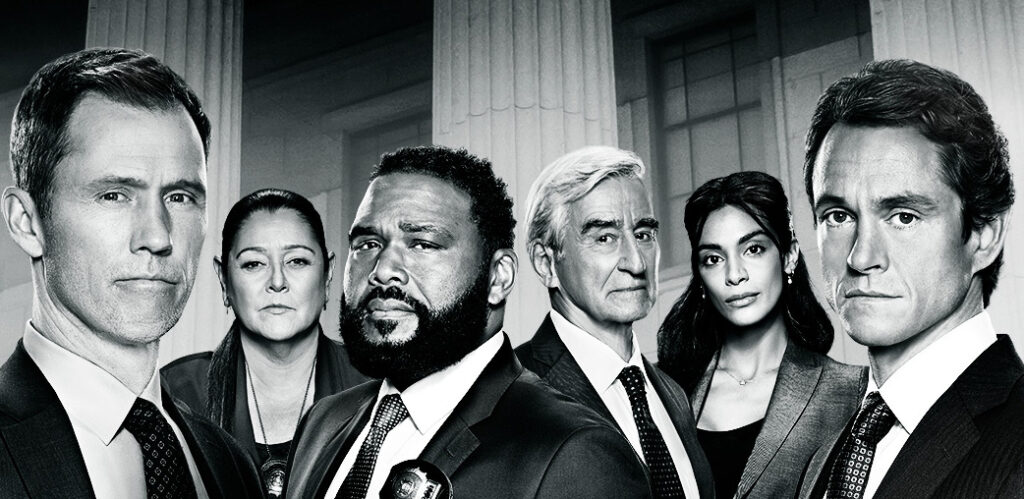
Episode #1
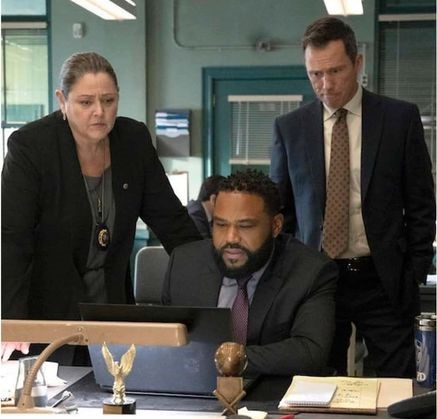
Ahh….its back. The show, the myth, the legend, the mothership. There is comfort in this for me. Law & Order was not only a great show, it was a comfortable one. The writers and producers understood that. They continued, year after year, to give their audience the comfortable storylines, themes and scenery that they had become accustomed to.
Our episode begins in old school Law & Order fashion; with a murder. Some poor soul (but is he really???The victim this time is actually a bad actor) has gotten offed and the dutiful detectives of the…wait…what precinct are Detectives Bernard and Cosgrove out of? Well, not important to our task here. Where shall our legal Review start….
- The Interrogation
- Detectives Bernard and Cosgrove get a law school C- for their interrogation. It always amazed me how the detectives could always get people to come down to the station without a warrant, totally voluntarily and submit to an interrogation in a grimy police station. First, they start this interrogation (make no mistake, it’s NOT an interview, but an interrogation) without Miranda. We all know what Miranda is, so no need to explain. Oh no. We always start our questioning with Miranda lest you want all the statements made thereafter to be suppressed. Yeah, yeah. Say all you want you are free to leave, but we know that is a farce here. Detectives Bernard and Cosgrove have absolutely no intention of letting this woman leave without handcuffs behind her back. They already had the CCTV footage placing her at the scene, her DNA on the cigarette butt, and hadn’t they already found the gun in the dumpster??? Miranda question, failed.
- Detective Cosgrove gets rowdy quickly in this interrogation and lies to the suspect about a whole lotta stuff. This becomes a bone of contention with the ADA, Nolan Price, but let the record be clear, legally, the police can lie to suspects. Yes. They can lie like rugs to whomever gets in that interrogation room. And they can tell raging, bold face lies too. Unabashed dishonesty can fall out of police officers’ mouths in an interrogation. You can thank Frazier v. Cupp, 394 U.S. 731, (1969), for that. But one thing police need to be careful of doing that Det. Cosgrove did do in his frenzy was (while he was doing a whole lotta lying) promise this suspect that she would not be prosecuted if she just told them what happened. THIS, is a no-no. While the police may lie in their interrogations, they cannot make certain promises in vain. Looks a little too much like coercion, for the law’s taste. The most dangerous of promises is the promise of immunity. In North Carolina, these are only valid if they come directly from the District Attorney and they MUST be in writing. So, making these types of promises to extract a confession CAN get a confession tossed and a judge wagging their finger at you (if you are a prosecutor).
- Later on in the episode, ole’ Jack McCoy (now District Attorney) chastises ADA Nolan Price for declining to utilize the confession extracted from the below average interrogation in his prosecution of the suspect. Yeah, the prosecution can pick and choose what it sees fit to present. There are no rules that say they have to present all the evidence they have, so the show is technically legally accurate. But, who are we kidding! OF COURSE the prosecutor would use this confession (if admissible)! Silly writers!


- The Trial
- Depictions of trials on Law & Order are always truncated and dicey. The opening trial gets a C- as well. Arguments are often fraught with legal error so let’s start with the stuff that is straightforward. The Defense attorney waived their opening argument, which is permissible and often a strategic choice. N.C.G.S. ⸹15A-1221(a)(4) permits defense counsel to “reserve” their opening statement.
- Det. Cosgrove’s outburst on the stand about the confession he obtained is clearly full on Law & Order courtroom scene drama! Unless the confession was suppressed or deemed inadmissible via a Motion ad Limine, the prosecution could trot it out whenever it wanted. This idea that the prosecution “agreed” not to use it is of no significance, legally. Yes, you would hope that the prosecutor would play nice with the defense and on a gentlewoman’s promise, not use the confession. However, if you want that type of commitment, I suggest you get an order to say that. Otherwise, here comes the defendant’s confession!
- ADA Nolan, in his cross examination, loved to throw around the “L” word. Now, in North Carolina there is one word (that I can think of offhand) that is ALWAYS off limits. This differs very much from other jurisdictions (or so I have heard from attorneys barred in other states). It’s the “L” word. In North Carolina it is unethical to call someone a liar or say someone is lying in open court. This is something that we always just learned in “trial” school, but here is the actual case that penned this rule, State of North Carolina vs. Miller, 157 S.E.2d 335 (1967). So, by North Carolina standards, naughty, naughty ADA Price.
- Of course, we couldn’t get through a Law & Order trial without one of the attorneys “badgering” a witness. Is that a real objection? I don’t think I have ever heard a trial attorney in North Carolina say this objection in trial. Perhaps it is a common one in NY? Who knows, but you can object if counsel becomes abusive. But usually, the judge steps in and does it for you so no need to call out the “b” word.
- Let’s move to the Defendant’s testimony. Do you notice that the Defendant in Law & Order almost ALWAYS takes the stand?? Pish tosh. Anyway, this Defendant wanted to discuss and describe how the victim raped her. Admissible? Depends. I see a Judge letting it in if there is any inkling that the Defendant killed the victim in self-defense. But, this is not what this poor Defendant was talking about. But, it’s a strategic thing as to if the prosecution wants to keep her from saying what the victim did. Doesn’t it give the prosecution the motive that they technically don’t have to prove? I dunno, but the long and short is that this testimony would probably come in.
- Okay, this next one, I am not sure I can even. A prosecutor from the same office having a talk with the Defendant prior to the murder and then refusing to reveal to the OTHER prosecutor actually prosecuting the Defendant what they talked about? Ah hell nah! Instant firing. INSTANT! Then, they just compel them to testify via subpoena or material witness order. This one is just a little too much for me. By the by….did Jamie (Carey Lowell) get fired in this one? Didn’t she used to be a Judge in the previous episodes? I may have missed a few.
- Why is it that in all of these drama shows, Law & Order no exception, that in a closing argument, the prosecutor always talks about themselves and their own experiences? I know, I know….its all about the drama and connecting with the character. But in reality, this is so damn bad! Lawyers are not allowed to interject their own personal experiences into their arguments because, obviously, this shit ain’t about us! N.C.G.S. ⸹15A-1230 speaks directly to what we can and cannot say in our arguments. If an infraction on this front is bad enough, it can invoke a mistrial. Oooohhhh! The Judge is gonna take a piece out of your ass for this one!

So there you have it! The first Review of the first episode of the 21st season of Law & Order in the virtual “books”. Let’s see if the fictional police and prosecution team can get a higher fictitious grade next week!
Episode #2
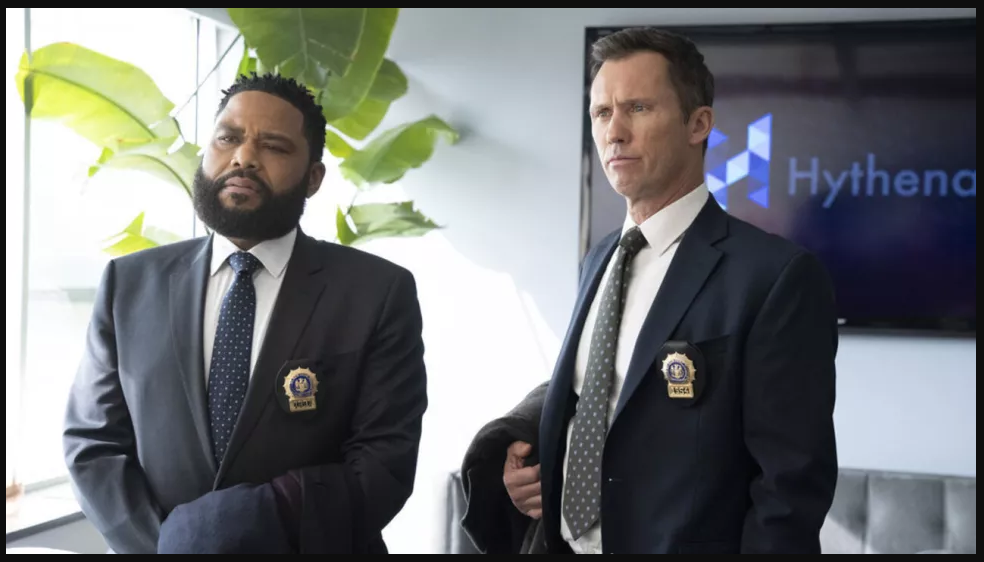
Welcome to week two and episode two of the mothership! Okay folks, this week the episode seems to get right into the legal arena, giving short shrift to Detectives Bernard and Cosgrove. Not much of an interrogation in this episode to legally pick apart. So let’s delve right into the trial stage.
The Pre-Trial
- Law & Order LOVES their chambers conferences, don’t they? In NY, is this really that much of a thing? I mean there is always a chambers conference where the lawyers are arguing their respective legal positions within the confines of the Judge’s chambers as opposed to in open court. In the classic episodes of Law & Order (I miss you so much Lenny Briscoe!), you would often see a quiet little court reporter in the background somewhere typing away on their little machine as everyone gets all upset and indignant in front of the judge in chambers. I failed to see a court reporter in this conference, which makes me wag my finger at this legal argument happening off the record and in chambers. And the judge always makes a decision, right then and there…no handing up (or to) of cases for review? If you want anything to count, it’s gotta be on the record, at some point.
- ADA Nolan Price wants to be able to present evidence of the Defendant’s previous bilking of clients and patients by her giving them false test results to be able to show that she is a damn liar (oops, can’t say that in court), and the motive for killing the victim. Here is where the seminal New York State case of People vs. Molineux, 168 N.Y. 264 (1901) is uttered. Molineux is the case in New York legal precedent that establishes the Prosecution’s ability to present evidence of a Defendant’s prior bad acts not to show propensity or action in conformity with, but to show evidence of the following ONLY: motive, opportunity, intent, common scheme or plan, knowledge, identity or absence of mistake or accident. North Carolina Rule of Evidence 404(b) is the North Carolina equivalent of this rule. But this is a very NARROW exception that takes the demonstration of precision and close similarity to overcome. Just because a person may have stole purses from old ladies in their youth doesn’t mean those prior bad acts are admissible (under this rule) in a case where the same person is accused of bludgeoning their mail carrier to death. If my recollection serves me, ADA Price wants to utilize evidence of this shameless and sheisty behavior to demonstrate evidence of her motive to kill the victim; she killed him because he was about to out her regarding these poor test results. Judge keeps it out because of the fear of it being more prejudicial than probative (North Carolina Rule of Evidence 403). Meh. Maybe the right call.
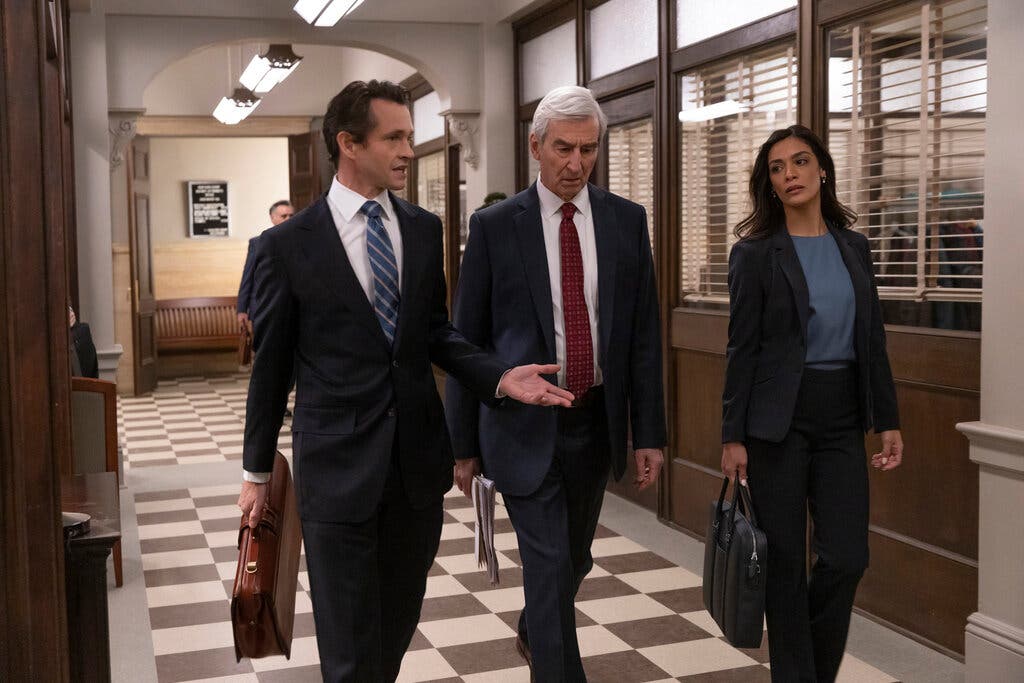
The Trial
- ADA Nolan Price gets a better grade, at first, this week for his orations (at least opening statement) in court…a B-. But, of course it is still rife with naughtiness. ADA Price’s opening statement is more argument than a forecast of the evidence. N.C.G.S. ⸹15A-1221(a)(4) permit both sides to make a brief opening statement and State of North Carolina vs. Fisher, 336 N.C. 684 (1994) further defines the opening statement as a statement that gives the jury a brief and general forecast of the evidence. ADA Price goes dramatic with his speech and strays from the forecast part of the statement. He also resorts to calling the Defendant a “cold blooded killer”. Now, now counselor. It’s not only impolite to call the defendant a name, but it is in violation of the North Carolina General Rules of Practice for the Superior and District Courts, Rule 12: attorneys are not permitted to become abusive or insulting and should at all times conduct themselves with dignity and propriety. I am sure the cases demonstrating this are very interesting, see State of North Carolina vs. Matthews, 358 N.C. 102 (2004) where the prosecutor called the defendant many things including a monster. Let’s get some more practice at this, shall we?
- When things for the Defense start to go sideways early on, they file “something” that appears in the ADA’s hands as a change in their defense. This is a Law & Order favorite move. What in the hell? Usually, the Defense need say NOTHING of where and how they intend to proceed in their defense. In only very narrow and enumerated circumstance does the Defendant need to give the prosecution any heads up as to what their defense would be. N.C.G.S. ⸹15A-905(c)(1) enumerates the defenses for which the Defendant must give the prosecutor notice of their intent to use: alibi, duress, mental defect, entrapment, mental insanity, self-defense, accident, automatism, involuntary intoxication, voluntary intoxication. Here, the notice is of the intent to utilize self-defense as a defense to the unlawful killing. So, I guess, on this one, they get the part about giving notice right. They just get it horribly wrong that this is done in the middle of trial. This type of notice has to happen well in advance of trial. Otherwise, its not really much of a notice, is it?
- Defendant gets the opportunity to give late notice of self-defense and claims she was suffering from Battered Women’s Syndrome (BWS). Not all jurisdictions in the United States recognize this syndrome as a plausible defense worthy of a self-defense or special jury instruction. North Carolina is one of those states that does NOT recognize Battered Women’s Syndrome and evidence therewith as requiring a jury instruction of self-defense, whether perfect or imperfect. See State of North Carolina vs. Norman, 378 S.E. 2d 8 (1989). New York is different and allows evidence of Battered Women’s Syndrome in self-defense cases.
- While ADA Price and his side-kick (I am a little frustrated that they have written her more like a paralegal as opposed to an ADA) are fussing with one another about domestic violence, there is a reference to jury questionnaires. These are a real thing that can be employed, after motion from either the Prosecution or the Defense. From what I can see this rule is established through case law in North Carolina, see State of North Carolina vs. Lyons, 459 S.E. 2d 770 (1995). The old adage that you can’t win your case in jury selection, but you sure as hell can lose it, is true. ADA Price and the side-kick try to figure out if their case is now toast because they needed to pivot and are concerned their jury selections no longer jive with their earlier strategy. Not bad on this one. This little scene harkens back to the true cleverness of Law & Order.
- At the very end of the trial, the prosecution pulls a fast one and sends Detectives Bernard and Cosgrove a hunting for the Defendant’s medical records. They start by interviewing medical doctors at a hospital where she received medical treatment. Bah Humbug!!! Ummmm, I don’t think there is ever a time, other than when insanity is a defense, when the prosecution can get a hold of the defendant’s confidential medical records; even if they take the stand. AND no doctor in HELL would talk to anyone except for the patient about their medical treatment. HIPAA!!!Oh HIPAA!!! Where art thou?? So the bottom line: the Prosecution ain’t getting shit when it comes to the Defendant’s medical records—at LEAST not without a court order AFTER in camera review!
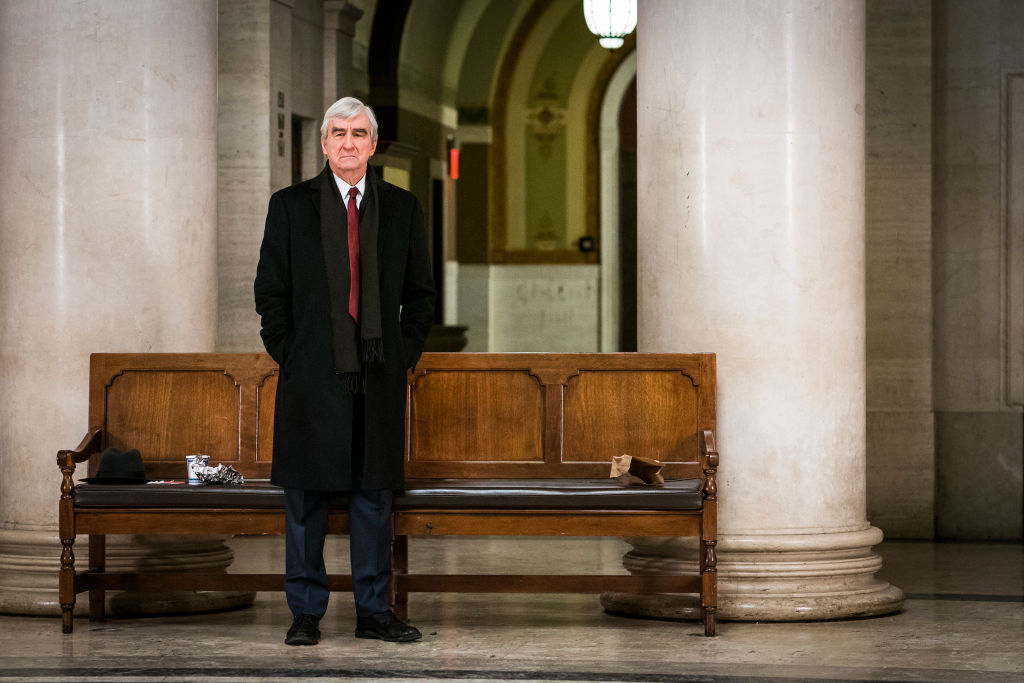
So, there you have it. Episode number two in the Reviews history books. I will continue to root for better grades next week.
Episode #3
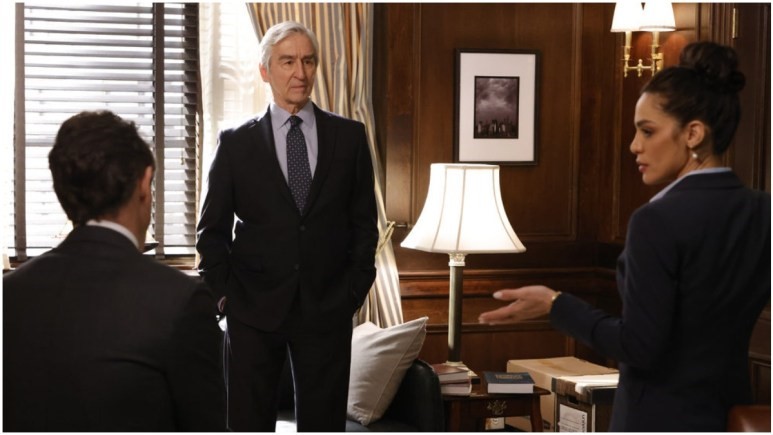
Welcome to week three, episode three of the mothership commeth back! How is everyone holding up? Hang in there, I think the re-boot will hit its stride soon. Now, onto this week’s Review!
- The Investigation
- It’s pretty shocking to see blood on the pavement and blood smeared all over a van in broad daylight on the street. Ahh, I miss the City! Detective’s Bernard and Cosgrove are on the scene and searching the van. Do we need a warrant? Well, its always better to err on the side of caution and get a warrant. However, seeing as there is blood smeared all over the van and on the pavement outside, exigent circumstances would probably prevail as the owner of the van with the expectation of privacy is the one who is missing.
- Detectives Bernard and Cosgrove get a lead on a suspect and go to visit him at his place. Notice how Cosgrove paws through this poor sap’s closet without any hesitation. NO! Bad detective! Baaaad Detective! You can’t just go through people’s stuff, even when you are questioning them about possibly murdering someone! You can’t do this without… you guessed it…a warrant! Now, had he touched NOTHING and saw the contents of the closet without straining his neck, totally legal as there is the plain view doctrine. If it’s in plain view, that is not considered a search under the 4th Amendment and any evidence discovered in plain view is usable in the prosecution of said subject.
- The poor sap who had an illegal search of his stuff done by Cosgrove is hauled off to jail for some other reason. Detectives Bernard and Cosgrove get antsy and cannot wait to question him at the station. They start pummeling him with questions while he is handcuffed and about to get chucked into the squad car. They elicit incriminating statements from him. Say goodbye to those statements, gentlemen! Where in the hell is Miranda?? Why don’t they like Miranda?? What did Miranda ever do to them? Oyvey! This young man will get a walk with NONE of the juicy evidence the Detectives worked so hard (and poorly) to get.
- The Detectives mention the use of an automatic license plate reader to track down what cars traversed a certain path they were investigating. This is relatively new technology that allows only law enforcement agencies to utilize and access the data. In North Carolina, they are authorized pursuant to N.C.G.S. §20-183.30-32. Generally, we probably don’t have much of an expectation of privacy in our publicly displayed DMV issued licensed plates. Doesn’t look like the use of these doo-hickeys run afoul of the 4th Amendment. Interesting….
- Detectives Bernard and Cosgrove get an “A” for their interrogation of the ultimate suspect this time. Suspect/Defendant calmly asks for an attorney and amazingly…Bernard and Cosgrove stop talking and leave the room. Good job fellas! You got one!
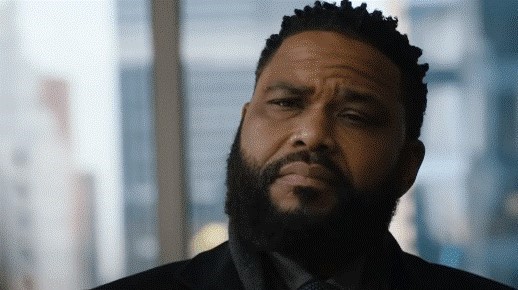
- The Trial
- ADA Nolan Price gives ole’ District Attorney Jack McCoy a hard time about prosecuting the case without a body. This can be done, but of course ADA Price makes a good point that they need to establish FIRST if the victim is dead to begin with. Good job issue spotting ADA Price!
- Here comes Molineux again (NC’s 404B). ADA Price wants to use evidence of the Defendant’s previous stalking of victims as evidence of prior bad acts that are admissible. Judge gives it a good thought, but keeps it out. Meh. Problem for ADA Price is that all the other stalking victims ended up alive (well, not a problem for these poor survivors of abuse…but you know what I mean). A lot of other similarities, but, like I said before, this hurdle is often hard to clear.
- ADA Price gets the victim’s mother up on the witness stand. This demonstrates an interesting misnomer that most people who don’t do this trial work don’t understand. Rarely, will the victim’s family testify in such a homicide case unless they give facts that are essential to determining one or more of the elements or a timeline of events. Most of the time, their testimony is irrelevant and only serves to prejudice the jury due to it most certain high emotional content. Mom, here also testifies to what her daughter would have done. OBJECTION! Unless she is testifying to a habit of her daughter’s (North Carolina Rule of Evidence 406—Habit; Routine Practice) that is relevant to facts of the case, this shouldn’t come in. Defense does a good job with Mom on the stand by using the present tense to describe the victim. The Defense doesn’t want to concede that she is dead. So this tactic is real and poignant. However, things go a little sideways when mom starts yelling at the Defendant in open court. It actually is common that a witness will try to directly address the Defendant. But this is clearly a no-no and the Judge promptly bangs her gavel to resume order. SIDE NOTE—who here has actually been in a trial where the Judge actually banged their gavel???
- OF COURSE the Defendant testifies! Would it be Law & Order if he didn’t? ADA Price brings up the fake dating profiles to attack his credibility. Good job! Totally permissible as it is done to test his credibility, which is absolutely appropriate (just can’t do it to show he is a heel).
- Finding evidence during the trial…what to do! This is a sticky wicket because the Defendant is entitled to notice and the discovery statute requires it (at least in North Carolina it does). But, the prosecution can’t really be at fault because THEY didn’t have it either. What to do? Judge’s call. The Judge is the sole arbiter of the admissibility of evidence in a trial (NC Rule of Evidence 104) To try and keep due process in play, the Judge has the discretion to adjourn the trial in order to allow the Defense to re-group and do whatever testing or investigation they need regarding the newly discovered evidence.
- Did you notice that that the Defendant testified before the Prosecution closed its evidence? Maybe the whole newly found evidence threw everyone off…it did me! The Judge clearly let the Prosecution re-open its case in light of the newly found evidence. Judge can do this. The Judge is the person in the courtroom who rules how the trial proceeds and the Judge has wide discretion.
Week three, episode three in the Reviews proverbial books! Now, I know there has been a lot of buzz on the inter-webs about the overall quality of the show. But I say we need to let the 21st century Law & Order gang settle into their roles. The vintage show is a tough act to follow, so it is only fair we give the newbies a fair chance at making history like the old version did. See you next week!
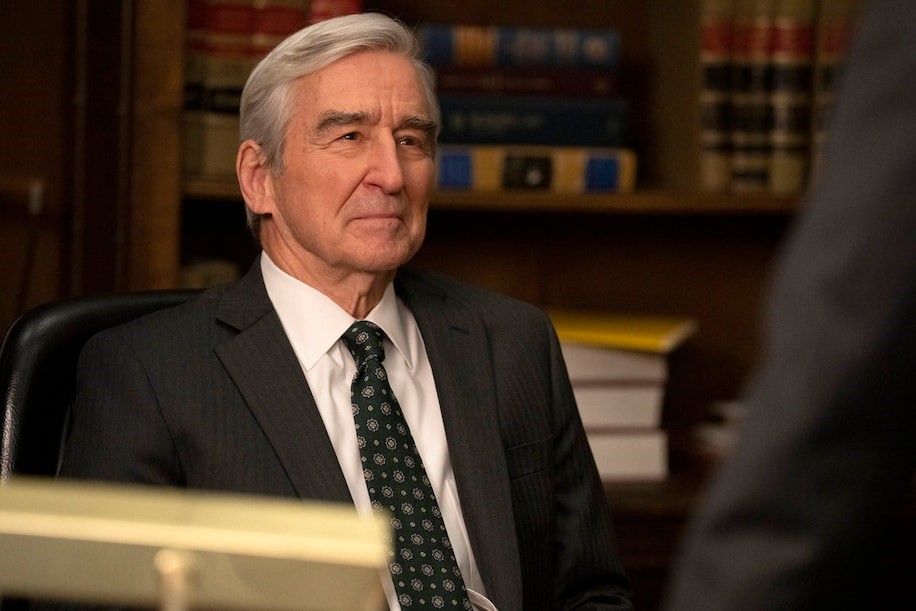
Episode #4
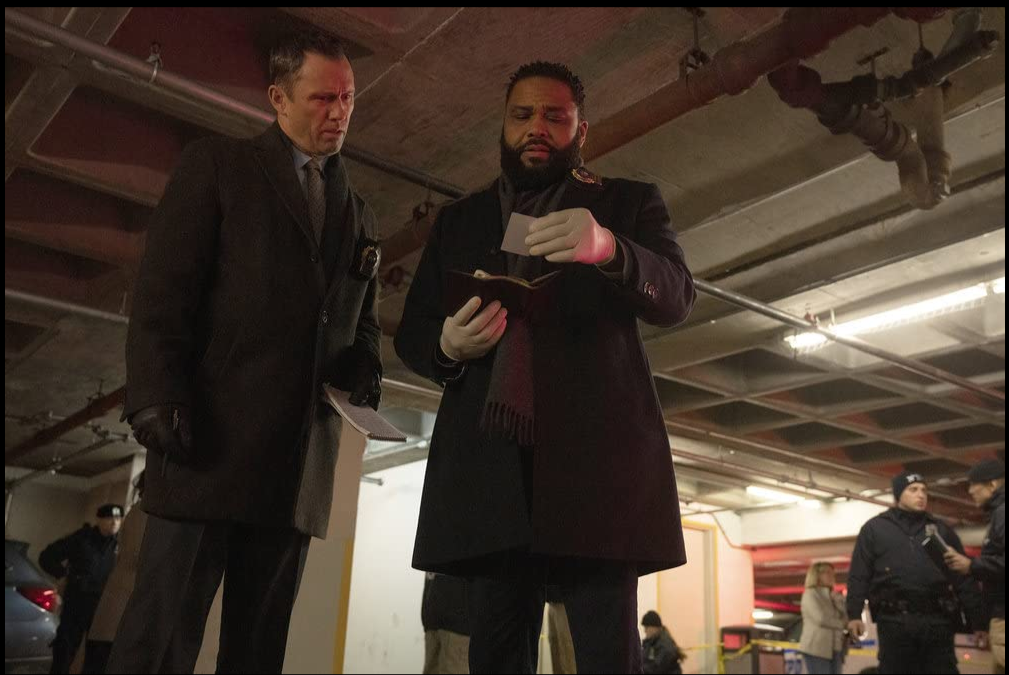
We are now settling into the season and the legalities are getting controversial, even by Law & Order standards! The real nitty-gritty legal issues come up during the trial so I will focus on that this week. Let’s get into this week’s Review!
- The Trial
- ADA Price issue spots well again by realizing that without evidence of a motive, a Jury may have difficulty being convinced of the Defendant’s guilt beyond a reasonable doubt. However, he is correct; motive is never an element for the Prosecution to prove in a murder case.
- ADA Price gets all a flutter in his opening statement and semi-crosses the line when he shows the jury a horrific photograph of the dead body of the victim at the crime scene. This is usually a big no-no! Evidence is rarely, if ever utilized, in an opening statement because it has not been properly authenticated, introduced and published to the jury pursuant to the rules of evidence. However, the use of exhibits during opening statement is within the discretion of the trial judge see United States vs. Burns, 298 F.3d. 523 (6th Circuit, 2002). What I recall learning about this is that if you want to use exhibits during opening, the best practice is to file a motion prior to trial making that request, indicating what exhibits you desire to utilize. The judge probably then decides the likelihood of the requested exhibits admission at trial any way, and whether the probative value of their use outweighs any prejudicial affect. But generally, this is a no-no.
- The Defense gets all hot and bothered examining the Prosecution’s witness who was less than an upstanding citizen. Questioning a witness about their prior criminal history is fair game under N.C. Rule of Evidence Rule 609. But…you gotta know how to do it: “What have you been convicted of in the past 10 years that carries a 60 day sentence or more?” Magic words…you better get ’em right, or a persnickety judge may sustain an objection to what you ask!
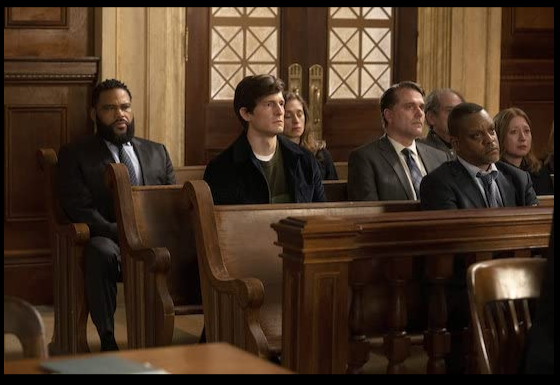
- ADA Price questions the starry eyed (and not so bright) boyfriend of the Accused about the day of the murder. Someone must have given this poor simpleton a quick primer on the 5th Amendment as he asserts it when he doesn’t want to answer the 64 million dollar question. The assertion of the 5th amendment (against self-incrimination) by any witness is not absolute. The witness actually has to have something that may incriminate them to hide; not just that they don’t want to answer the evil Prosecution’s questions. Here, ADA Price gives the witness immunity (on paper it seems) on the spot, in open court. NCGS §15A-1052 governs grants of immunity in trial. Thereby making any crimes allegedly admitted to by the witness not prosecutable. No danger of prosecution, no right to assert the 5th. You better answer those questions, buddy! While NCGS §15A-1052 seems to insinuate that a grant of immunity can be done on the spot, usually if everyone has read their discovery and interviewed their witnesses in advance of trial, this should not be a surprise. Oyvey….does no one try and do their homework before trial???
- Of course when the Defense starts to feel the heat of the Prosecution’s fire, blatowww!!! The Defense changes their “defense” to not guilty by reason of mental defect. Come on people! Why do they always insist on doing this mid-trial? We have talked about this before, gentlemen. NCGS §15A-905(c)(1) codifies the notice requirement for certain defenses; of which insanity, mental infirmity and diminished capacity are a few. You have to give notice PRIOR to trial for evidence of these defenses to come into the trial. I have a feeling this lesson will not be learned in the world of Law & Order anytime soon.
- When the Prosecution gets blindsided with the insanity defense, ADA Maroun tracks down the previous therapist of the Defendant and interviews her in the District Attorney’s Office. Law & Order doesn’t seem to like HIPAA either. For those who don’t know what it stands for, HIPAA is the Health Insurance Portability and Accountability Act. This is the premier federal law governing patients’ rights to privacy of their health record; of which doctors carry a lot of information. Of course, this clinician would never submit to an interview without written consent from the patient, who is the Defendant in this case, or via court order or subpoena to testify. Information just flows like butter in Law & Order world, doesn’t it?
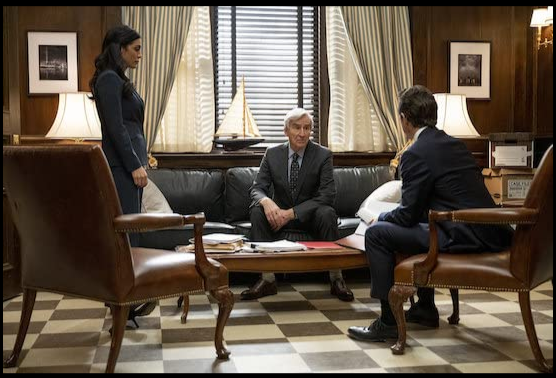
- I am just going to gloss right over the scene where the Prosecutors meet with the Defense Team SANS the Defendant, but with her father present because there is just too much wrong with this.
- ADA Price realizes how toxic the Defendant’s father’s guardianship over the Defendant is. SO much so that he makes the determination that this is really a manslaughter case. So much so that he files a motion in the CRIMINAL CASE to terminate the guardianship. Really???I think this is a little outrageous even by Law & Order standards. In North Carolina NCGS ⸹35A-1290 dictates how and for what reason the clerk of court may remove a guardian. It seems that any “interested person” may petition the court via petition or complaint to do so. So, technically, ole’ ADA Price could have moved (as a private citizen) to remove the Defendant’s father as her guardian. But, damn it, not in the criminal trial of the Defendant! Wrong venue dude….wrong venue. And the Judge actually says so by directing him down the hall to family court (or in NC, the Clerk of Court’s chambers!).
- The grande dame indictment of this week’s legal blunders comes when Detective Bernard visits the Defendant at the jail, in the middle of trial, to show her some thangs. What??? I started yelling at my television when I saw this one. But then, I started to think: is this impermissible? Being an attorney, it is sacrilege (and will get you disbarred) for Prosecutors to talk to the Defendant without their attorney knowing or being present. However, Detective Bernard is the poe-poe; not an attorney or the Prosecutor. Can the police come and visit the represented Defendant in the jail for a nice chat? So much of what the police do in terms of talking to Defendants is all geared to how they use the Defendant’s statements subsequent to that. Here, Detective Bernard actually didn’t want the Defendant to talk, just listen. Turns out her attorneys (and her wayward, scummy father) were not telling her anything of what was going on in the case; most importantly the plea offer to manslaughter. Don’t get me started on a tangent on that one. But, it actually is NOT impermissible for the police to visit Defendants in the jail, even when they have attorneys. Defendants sometimes summon the police to their jail cell without their attorney’s knowledge. The key is how those statements taken by the police during that visit are utilized afterward. Here, there was no intent for Detective Bernard to elicit anything from this Defendant. He actually wanted to give her thangs. Even though, in spirit, this is repugnant professionally, it is technically permissible.
- The only hiccup I can see is that, at the end of the episode, we see that Detective Bernard was sent on this errand by the Assistant District Attorney Maroun. Awwww, hell! Now THAT is what makes this stink. This is a big no-no. I am pretty sure the State Bar (of any State) would see no distinction between the ADA herself going on this errand vs. her sending the good detective. The ADA DID have a right to be concerned about the Defendant being in full possession of the facts considering her shady ass lawyers. But the way to do that is to file a Motion with all that juicy information and argue it in court so that the Defendant hears it all. Or file a Motion requesting that defense counsel be removed or relieved of duty. ADA Maroun needs to say good-bye to her law license (much less her job).
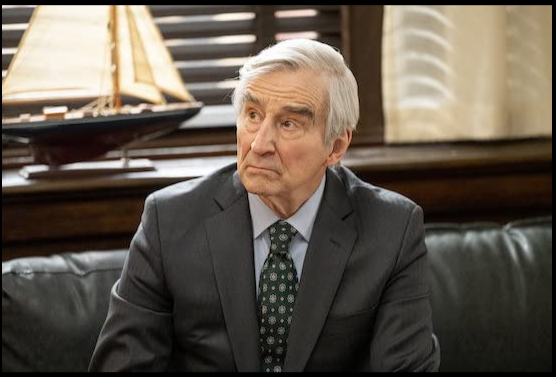
Oh! That last one was a doozy! All sorts of legal debauchery are going on in this new Law and Order reboot. I am glad it only comes on once a week because I need a break in between the foolishness and the tomfoolery! See you all next week!
Throw Back Episode #1:
Season 3, Episode 9:
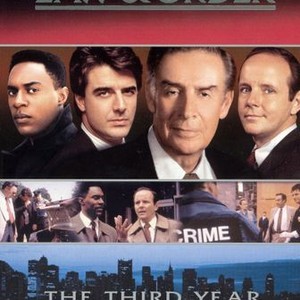
Well, it has happened much sooner than I had anticipated. This week’s Law and Order is….well….not new. Yes, they are already starting to run re-runs of episodes. But fear not! Episode 5 of the new Law and Order Season 21 will air in a couple of weeks on April 7th. 2022 at the usual time of 8pm Eastern, 7pm Central time. So you can expect a Review of that very soon after!
So, as previously promised, those weeks we are made to do without the modern episodes we are coming to love, I will review the oldies but goodies starting with Season 3. Why Season 3? Because, my friends, Season 3 is the beginning of a Law and Order era. Season 3 is when we are introduced to Lennie Briscoe, the famed and incomparable Lennie Briscoe.
So, this week’s Review is a throw back to the year 1992. Detective Logan is in need of a new partner and Detective Lennie Briscoe is assigned to the task. It takes a minute for these two to develop their chemistry, but they do and we are happy to watch as they start their union of fighting crime and corruption in the heyday of the crack epidemic in the 90s in New York City. I was there for it people…and it wasn’t pretty.
Quick Synopsis: Local patrol spot a woman and a man outside a bar, possibly drunk, possibly fighting, possibly loving. They fail to check in and soon shots ring out. The man lies dead on the pavement and Detectives Logan and Briscoe are called to the scene. This is the first murder these two are working and there are growing pains to be had. Detectives Logan and Briscoe find out, through some good ole’ detective work, who the woman is, and they arrest her. The Defendant claims the man was attacking her after he wouldn’t take no for an answer inside the bar. ADA Ben Stone and Paul Robinette have to tangle with a possible crime against woman self-defense until they learn the real story. The real story is that she was sent there by a local Irish mobster to off the man who had owed him a debt.
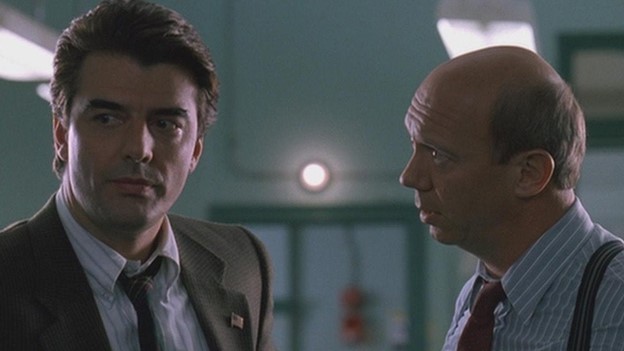
- The Investigation
- I gotta say, there is a real comfort in 90s era Law & Order (and not just because I am totally fanning on Lennie Briscoe!) Detectives Logan and Briscoe do some real gumshoe police work by actually talking to witnesses to get the lead on the identity of the victim. Great job, gentleman! This episode starts with an A+.
- Detectives Logan and Briscoe figure out the victim’s identity and go and visit his “place of business” which turns out to be a real shit hole somewhere in Queens. The landlord (or what New Yorkers call the Super) let them in without any mention of a warrant. Now, even though this is the victim’s business, it is always a good idea to get a search warrant. You never know how the investigation will shake out, what you will find, or who actually has an expectation of privacy within. Buuuuutt, this is 90s era New York. I give the Detectives a pass on this one.
- Now, this particular point has absolutely nothing to do with law….but Detectives Logan and Briscoe stop in at “Patsy’s” for a slice. Omg! You get a close up view of a true Italian pie as the camera pans across the restaurant toward the dining Detectives. I so miss New York!!! And it is not the same anywhere else because of the water!
- Lennie Briscoe is trying to get brownie points with his new partner Detective Logan by “pulling” the Irish Bar’s credit card receipts. Usually, businesses are not all that thrilled to cough up such financial records of their patrons without a search warrant or subpoena. If they willingly give it over, they are ostensibly consenting to the search of their financial transactions. Briscoe is hoping to track down who was at the bar in order to interview them about the murder. Good police work buddy!
- Again, good police work gentlemen in tracking down those patrons that were there and interviewing them. From those interviews they figure out the suspect had a killer make up job on her visage. Getting the name of the salon is great police work.
- The witness they track down feels confident that she can identify the suspect with the killer make up. So, when pulling out the polaroids of possible suspects doesn’t work, they take her to the actual place of business to see if she can identify any of the employees as the killer. Ta-Da! You are introduced to the show up (or are you?). In State of North Carolina vs. Turner, 289 S.E.2d 368 (1982) the NC Court defines the practice and states that although it is a questionable way of identifying suspects, it is not per se violative of a suspect’s due process rights. Now, show ups usually occurred very close in time to the actual crime. Clearly, days later, this show up is shamelessly deficient. However, in this scenario, the Detectives take the witness to a salon full of women and ask the witness to point out the person she saw, out of a crowd. A show up, not so much, perhaps. Show ups are criticized because the witness is being shown only one specific person who is brought to them by the police. So, the idea is that it is highly suggestive that the police are showing the witness someone who is already thought to be guilty. Here, the detectives just let the witness loose on a crowd of preening women and ask the witness if anyone looks familiar. She sees the person from the bar. I actually think this is okay. But of course, all of it is up to the court!
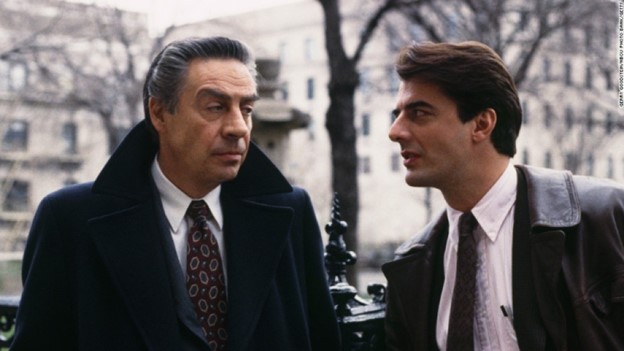
- The Trial
- Prosecutors Ben Stone and Paul Robinette are confronted with a possible imperfect self-defense claim of the Defendant (imperfect because if proven, it does not completely absolve the Defendant of guilt like perfect self-defense does). So, is that why Dr. Olivette is called in for an exam? Usually, only the insanity defense opens the door to the possibility of the State being able to request the Defendant submit to a mental health examination by its own expert. In researching this little tid-bit, under North Carolina law, I honestly could not find the authority that allows the State to ask the Court to order the Defendant to submit to an examination by their expert. The State will of course, pursuant to NCGS ⸹15A-905 have to get any and all reports of the Defense’s psychological expert. Perhaps this is clear under the New York Penal Code? Anyway, it’s weird that Olivette gets to examine the Defendant due to her imperfect self-defense claim.
- Having Dr. Olivette examine the Defendant turns out to backfire on ADA Stone and Robinette when poor Olivette’s own past sexual assault seems to cloud her judgment about the Defendant. Anyway, the report she generates is not going to help the State. However, a big deal is made when the Defense wants to use Dr. Olivette as their own witness. How is this a surprise? Even if Dr. Olivette’s report didn’t get turned over to the Defense (which it probably should have been out of an abundance of caution due to Brady v. Maryland, 373 U.S 83 (1962)) they clearly would have known she generated one since the Defendant met with her? Wonky gentlemen! Not handing it over didn’t fool anyone.
- ADA Robinette goes hunting for more intel on the Defendant. Sure. He finds it when he goes to her building and inquires of…you guessed it…the Super. The Super pulls out all this juicy financial information from the Defendant’s file. No! Naughty Paul! Even if the Super inappropriately gives that to you, you ain’t using it at trial no time soon as she clearly had a reasonable expectation of privacy in her financial records for her building. Also, you catch that her swanky avenue apartment only cost her a whopping $220,000? I almost cried.
- Okay, okay….this last one takes the cake. ADA Ben Stone and ADA Paul Robinette finally uncover what really happened. Shocker….the Defendant is lying to them about the alleged imperfect self defense. Turns out she is an Irish mob hit woman. So, of course rather than trot this out in court, they lean on the Defendant’s attorney thinking that she will feel betrayed that her client lied to her about her feminist rah rah defense? Oh, no, no, no, no gentleman! That savvy lady defense lawyer is just as smart and savvy as they are! Totally uncool and….foolish! Attorneys have the ultimate duty to their clients to defend their rights and provide competent legal representation. The fact that your client may turn out to be a lying shit head is not only possible but fully to be expected. However, what IS interesting about this one is the effect of those wiley Prosecutors in telling this supposedly ignorant lady lawyer the truth about her murderous client. Now that she knows her client is lying, she actually DOES have a legal quandary. We as lawyers cannot suborn perjury. So, if our client tells us one thing, then says to us that they are going to say a whole other thing that is a lie on the witness stand if called, we have the sticky ethical dilemma of zealously advocating for our client and bowing to their desire to testify, BUT not also suborning perjury. So, it was a nasty thing that ADA Stone did to tell the defense attorney. Because now, she KNOWS she cannot put her client on the witness stand; which she had to as her client’s testimony was vital to their now bullshit defense. Clever!!
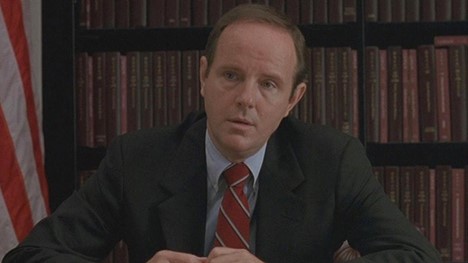
There you have it! The Reviews first ever throwback episode Review. I will continue with our walk down memory lane next week with the Review of Season 3, Episode 10 while we wait for Season 21 to return to the airwaves. Try and catch other throwback episodes on BBC America (if you have cable) every Wednesday starting at 5pm Eastern. See you next week!
Throw Back Episode #2:
Season 3, Episode #10:

We are in week two on our Law & Order, Season 21 hiatus so of course, I have another Review of a throwback episode for you! Continuing with the 3rd season of Law & Order, episode 10. We start to feel a little comfort in the “new” partner situation of Mike Logan and Lennie Briscoe…
Quick Synopsis: A young pregnant immigrant woman from Nigeria seeks the American dream and boards a plane to America. While in the traditional NYC yellow taxicab on the way into Harlem, this bright-eyed immigrant woman, while gazing at the splendor of the New York City night skyline, starts to go into convulsions. The cabbie rushes her to the hospital where she and her unborn child die. Upon further investigation into her death, the hospital discovers that she had swallowed multiple condoms filled with heroin, one of which had broken and caused her and her unborn child’s death. Logan and Brisoe are called to the hospital to take hold of the over one hundred-thousand-dollar street value amounts of heroin extricated from her stomach. Through their investigation, they learn that her trip was sponsored by a local Nigerian chief now living in the United States and an American construction contractor in need of cheap labor. The Nigerian embassy gets involved and sends an attaché to help ADAs Stone and Robinette bring the nefarious chief to justice. Ultimately, Nigeria exacts its own revenge by utilizing the New York State Court process to gather the necessary evidence against the Nigerian chief stateside while orchestrating, in secret, the chief’s extradition back to Nigeria to face the ultimate penalty that the American system is unwilling to mete out.
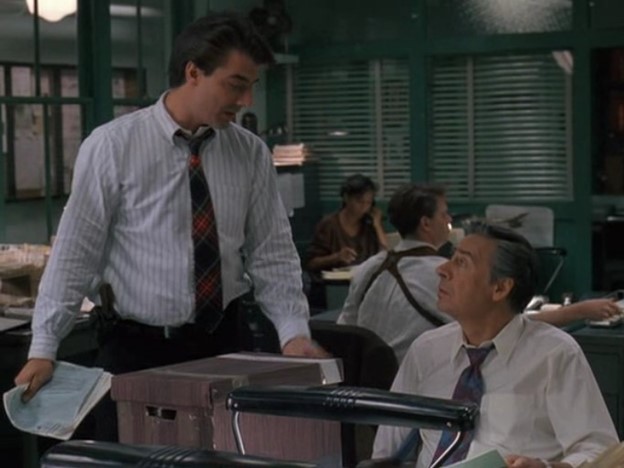
- The Investigation
- Detectives Logan and Briscoe are called to the hospital to investigate the death of a drug swallower (one who swallows drugs and transports them in their digestive system to smuggle them into the country). Finding the dead woman’s co-conspirators is number one on their list so, the hospital gives them her baggage to search. Do they need a warrant? Well, the only person reasonably that would have an expectation of privacy in the dead woman’s effects would be her. Her co-conspirators would most likely have no standing to challenge the search of her belongings.
- In their pursuit of trying to first determine who the young woman was, the Detectives Logan and Briscoe hunt down the travel agency who booked the young woman’s flight to see if they are willing to give them a flight manifest. Former supermodel Beverly Johnson guest stars as the ravishing travel agency clerk who gives Detective Logan the eye. Ultimately, Logan manages to cajole the flight manifest away from the beautiful Johnson over drinks. No go, my detective friend. You would need a subpoena or search warrant to get an airline’s flight manifest. I believe this is because it clearly IS a search under the 4th Amendment as they are looking for the personal information of an alleged suspect in a place where they have a reasonable expectation of privacy. However, the alleged suspect is dead, so she will not be challenging the search and I don’t believe that others have standing to challenge a search of the manifest for her personal information. Still, in this post-911 world, not even law enforcement is getting a federal aviation flight manifest without due process, meaning a search warrant (just my humble opinion).
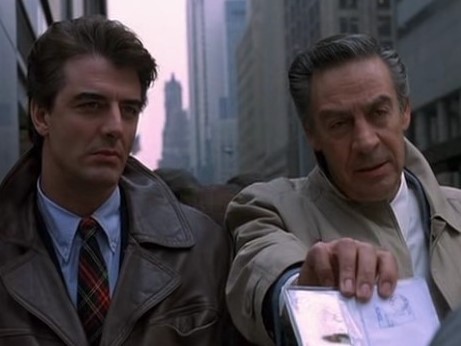
- As the investigation ensues, the Detectives keep running into the need for protected information on official documents. Detectives Logan and Brisoe find out the name of our poor deceased drug smuggler and now onto the hunt for her possible co-conspirators, as they truly do not believe she smuggled these drugs for herself. Detectives tap Immigration and Naturalization (now a part of Homeland Security) for the information on the young dead woman’s immigration form. This is an interesting one as I don’t see Homeland Security turning that over to them at all, even if they are investigating a smuggling crime like this. But, what would they do? Serve a search warrant on Homeland Security? Most likely, this part of the investigation is more real, they just visit this sister law enforcement agency and formally request this information. However, it is not all the time that the federales play nice with state law enforcement in terms of exchanging information.
- Detectives Logan and Briscoe circle back to the dead woman’s prospective employer to try and get the 411 on all his employees. Boss Man rightly tells them to take a hike without a warrant. Someone was paying attention during their criminal justice seminar!
- The Detectives get a suspect from doing an end-run to get the employers’ employee list. They settle on some poor feeble minded Nigerian man who is a janitor at the job. The Detectives have him in their interrogation room and it is clear that this poor man has been a victim of state sponsored terrorism in his homeland. He begs them not to flog him. Detective Logan, in response, says “Oh yeah, we promise not to flog you, this time. But you gotta tell us everything.” No sir, he does not. This would clearly be suppressed as this poor man, weather rightly or wrongly, truly believed that the police would flog him should he not tell them anything. Police coercion 101. Briscoe telling him, no, not this time, is an affirmation that that is what would come of him if he didn’t tell. PROBLEM!
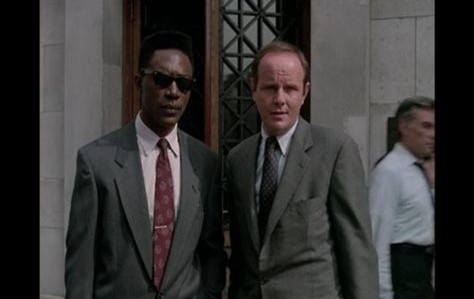
- The Trial
- ADA Stone and Robinette have a pow-wow with DA Adam Schiff in his office about the integrity of their case. Stone and Robinette have one of the accomplices/co-conspirators regarding the drug smuggling. But DA Schiff, oh wise one, reminds them that the testimony alone of one accomplice or co-conspirator is not enough for a conviction if it is uncorroborated. In New York, this rule is codified in N.Y.C.P.L ⸹60-22 and reaffirmed in People of the State of New York vs. Sage, 988 N.Y.S. 2d. 104, 2014 NY Slip Op. 02214. However, my research shows that this is not the case in North Carolina, see State of North Carolina vs. Martinez, 562 S.E.2d 915 (N.C. App. 2002). In North Carolina the rule is as follows: “…the uncorroborated testimony of an accomplice will sustain a conviction so long as the testimony tends to establish every element of the offense charged.” (quoting Martinez which cites State of North Carolina vs. Keller 256 S.E. 2d 710 (1979). But….we are in NYC and New York Penal law rules the day. DA Schiff, you got it right!
- Despite the trial date being set, the investigation goes on and Detectives Logan and Briscoe search a hotel room in which allegedly the dead smuggler was to be received by her co-conspirator. This is days after anyone involved in the crime would have been there. Do they need a warrant? The case law on this is actually quite dense. Ultimately, I say not so much. Once they checked out, they had no reasonable expectation of privacy considering it was a hotel room they failed to maintain and had left with no return. However, the cases on this subject make distinctions that make this question not so bright line easy to decipher, see United States vs. Domenech 623 F.3d. 325 (2010) and United States v. Allen 106 F.3d. 695 (6th Circuit 1997).
- Chief Nowacka (I am guessing about the spelling) starts feeling himself when he flashes his diplomat card and claims the State of New York cannot touch him for a crime such as drug smuggling. What the Chief is claiming the protection of is the 1978 United States law on diplomatic relations codified as the Diplomatic Relations Act, 22 U.S.C. 254. This Act shields certain diplomats and consular officials acting in the United States from prosecution for certain crimes because it divests the United States Court from jurisdiction over that individual. That means that if the person is verified to have this type of immunity, the United States Court cannot prosecute them; however their home country can. According to a US. Department of State Office of Foreign Missions booklet (located at web address: https://www.state.gov/wp-content/uploads/2019/07/2018-DipConImm_v5_Web.pdf) if ADA Stone wanted to prosecute Chief Nowacka, he would first have to request that the US State Department ask the Nigerian government for a waiver (to cede jurisdiction to prosecute the chief to the US). If the Nigerian government declined to issue a waiver, then ADA Stone would be out of luck in the short run. The consequence for diplomats and consular representatives who commit even the most heinous of crimes here in the United States is for immediate deportation to their home country where that country would be left to prosecute them for their crimes. Sounds shitty, huh? All ADA Stone could do then is just request local law enforcement enter that person into NCIC (the national database for warrants) and hope that the Chief returns to the United States without his special moniker. So, Law & Order, even though it is wishful thinking that you can still prosecute this chief if the crime is heinous enough, you can’t (not without a waiver).
- Chief Nowacka decides to dip out on the last days of his trial (a trial we KNOW ADA Stone could not proceed with) and all in the courtroom are left to wonder what happens next with the case. Well, in North Carolina, once prospective jurors have been called into the jury box, a trial has been deemed to have begun, see State of North Carolina vs. Richardson, 330 N.C. 174(1991). Ultimately, the Defendant in that instance has waived their right to be present by failing to appear once a jury trial has begun. Waiver in this instance in NC is permissible in all but capital cases (where Defendants have a right to be present at each and every stage of the trial). In New York, a person may be tried in absentia whether or not the trial has already begun. In People of the State of New York vs. Parker, 454 N.Y.S. 2d 967 (N.Y. 1982) the court ruled that a Defendant could be tried in absentia as long as the trial court properly deemed their absence as voluntary and thus their presence being waived. This New York case established the rules and procedures necessary for a court to make this determination upon proper warnings to the Defendant previously, called the Parker Warnings. So, in NY, a Defendant must be advised by the court of their right to be present at all stages of their trial and if they fail to appear the consequences of doing so; which include the People moving forward with trial in their absence. So, here I guess we are to presume that Chief Nowacka was NOT apprised of that right as the court stopped the trial? Who knows! But what we do find out is that the good Chief gets put on a plane (perhaps involuntarily) to face the music of a much harsher band (the Nigerian government) for his crimes. Who here feels kind of played??

This Throw Back Episode had me doing a lot of legal gymnastics this week! Next week, we should be back to modern times with episode #7 of Season 21 of Law & Order. Thanks for the walk down memory lane and catch you next week.
Episode #5:
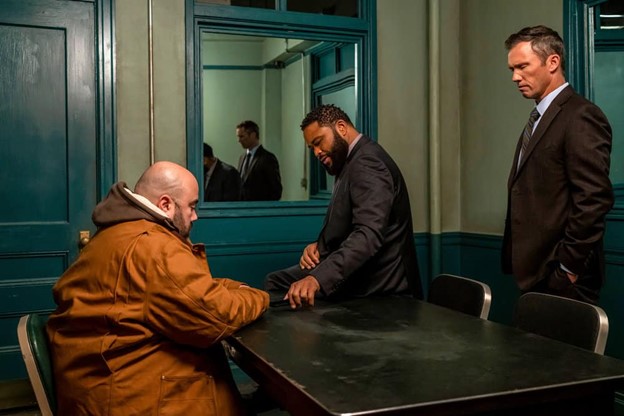
We have resumed the Reviews with Episode #5 this week, and Law & Order really is trying to keep with the times and stay “woke”. We have had a two-week hiatus so let’s, without further ado, get into this last episode.
- The Investigation
- Detectives Bernard and Cosgrove request “Computer Crimes” scan and search the victim’s devices for any clues as to with whom he may have had a problem. No warrant to be had, but this is okay. The victim’s wife is his assumed next of kin and she can give permission for them to search these devices. Best practice is to get this waiver or release in writing and make sure that no one else can claim they have a privacy interest in any of these devices. Sometimes, to be safe, applying for a search warrant allays all concerns of that.
- Detectives Bernard and Cosgrove get a lead on a suspect when they review some CCTV footage. They pick him up (of course he agrees to head down to the station with them) and they start interrogating him in the old squad room. This one is interesting. Is he free to leave as they are questioning him? He is not handcuffed, but they are clearly in possession of incriminating CCTV. When he spontaneously confesses, they immediately place him under arrest and Miranda starts to come out. I actually give them a B+ for this one. I actually think they are getting the hang of this!
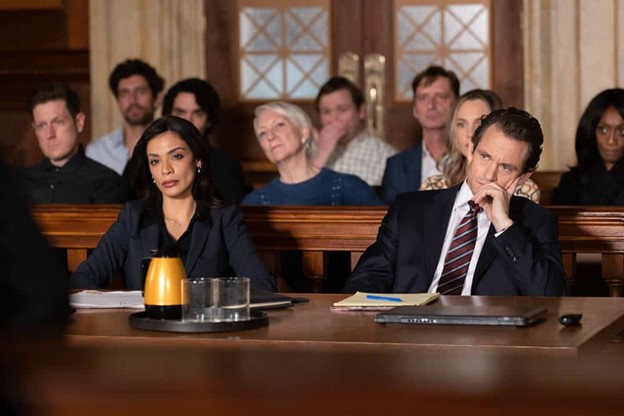
- The Trial
- ADA Maroun gets center stage at this elaborate bond hearing. Don’t you miss the old bond hearings from the days of yore of Law & Order? A crowded busy courtroom with all this noise and chatter and the DA standing and quickly arraigning the Defendant and asking for a bond. Why in the hell the change, I wonder? That is not so disarming as the Judge setting the bond and letting everyone know that her clerk informing the court of the Defendant’s Go FundMe page. Hell no! The Court cannot consider items of evidence outside the record. IMPROPER!!! FOR SHAME!!!
- Okay, okay, okay…Law & Order loves to put the Defendant in the presence of the ADA to talk about the crime…they allegedly committed. Here, of course, the Defendant is with his attorney in the ADA’s office and the ADA is dangling the prospect of a better sentence if the Defendant just tells them all that happened. Really, bruh?? Make no mistake the ADA wants to put this murderous dope in prison for as much time as he can, legally. Even though the set up is preposterous, the practice of the Defendant telling the DA what happened, even if it inculpates him, in exchange for a reduced sentence is a real thing. Its call the proffer. Federal Rule of Evidence, Rule 410 details the rules regarding the proffer. All proffers must be in writing. So here, the ADA really needs to get his pen out and write something down.
- ADA Price get’s wind of his golden goose, the actual murderer, deciding to off himself in his cell. Now, is it me or did this scene look as awkward as it seemed? The ADA just shows up and asks some random doctor in a hallway about the Defendant that has just offed himself. Did I miss something? So, the jail has a full-on infirmary? Wow! I didn’t know Rikers Jail was like that! I knew it was large, but really? I just can’t. What in the hell was he gonna do going down there? Hold the poor bastard’s hand? Bottom line is that his attorney really is the person to go to the jail, if at all, when something like that happens. The doctor would not tell the ADA shit directly. That would be the sheriff delivering that bit of information.
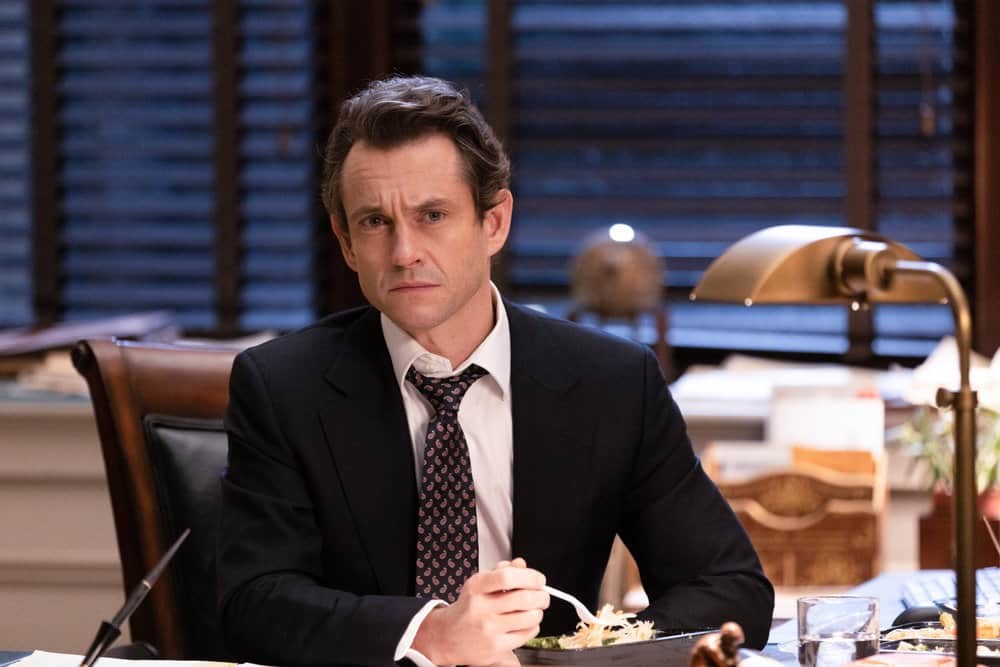
●So, the ADA has a quandary which is interesting legally AND Law & Order at least gets the complexity of it right. ADA Price was going to use the dead fool Defendant as his prime witness against the principal Defendant, the racist piece of shit talk-show host. Meaning that ADA Price was prosecuting the dip-shit talk show guy as the accomplice. So, this is where we learn about accessories, principals, and conspirators and how the law punishes them. ADA Price initially seems to have wanted to convict the racist dip shit as an accomplice (in NC called the accessory before the fact). Therefore, in North Carolina, as an accessory before the fact he would face the same punishment as the principal. NCGS ⸹14-5.2 abolished any distinction between accessories before the fact and the principals of crimes. So, it seems, ADA Price was hoping to convict the racist dip shit as an accessory before the fact with the testimony of the fool dead Defendant. However, that plan goes to shit when the fool off’s himself at the jail. How can ADA Price now proceed? Ever the ambitious one, ADA Price doesn’t want to lose the chance to impose the highest punishment on the racist dip shit for this murder. So, he goes for a very difficult and novel theory. This interested me to no end because it was reminiscent of a very notorious real life murder case in Georgia in 2010.
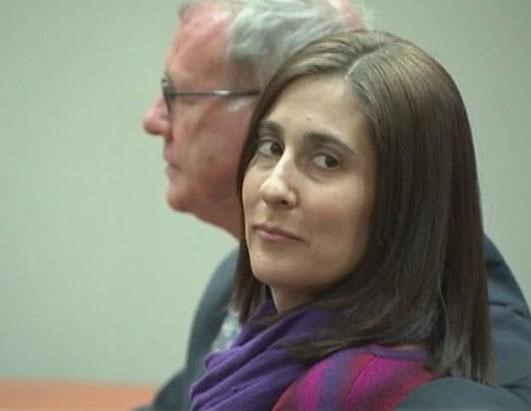
A woman named Andrea Sneiderman was investigated and charged with murdering her husband by utilizing a love-sick colleague to carry out her wishes. What was and still is very intriguing to me about the Andrea Sneiderman case was that it seems to be clear from the evidence that Ms. Sneiderman (allegedly) did not explicitly ask or direct her colleague to kill her husband. What she allegedly did was capitalize on the clear mental instability and obsession that this male colleague had with her to manipulate him into doing whatever she wanted him to do; which prosecutors alleged was kill her husband. ADA Price intended to prosecute the racist dip shit in the same manner. Its like the racist dip shit used the dead fool as a weapon by manipulating him into doing his bidding. Is there a conduit in the law for this type of prosecution? TOUGH!!! ADA Price attempted prosecute the racist dip shit AS the principal, as if he actually pushed the victim into the street. I could go on and on, but the long and short is that Law & Order gets an A for effort in trying to encapsulate this very tough and novel theory of the crime.
- I could go into the speech and First Amendment aspect of this, but I know you all have other things to do….
I think this is actually my favorite episode to date. Ahhhhh yeah! I think that Season 21 of the mothership, Law & Order, is hitting its stride. However, did anyone else notice that we didn’t get much of a glimpse of District Attorney Jack McCoy? That is the biggest downer of this episode. Otherwise, you did a better job this week, L&O! Can’t wait ‘till next week!
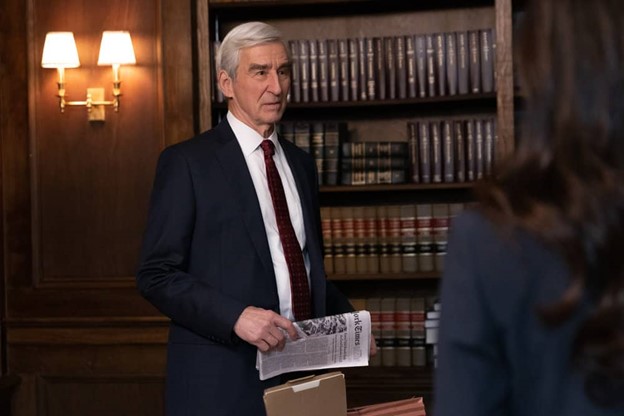
Episode #6:

Okay, okay! I know this episode aired the week before last, but technically, there are no newer episodes to Review so, I am on time! Behold the Review of Law and Order, Season 21 Episode # 6 dubbed the “Wicked Game”. This, ahem…, week’s episode seemed like it was trying to take on some new criminal justice philosophies regarding narcotics and controlled substances. However, I think things went a little sideways…
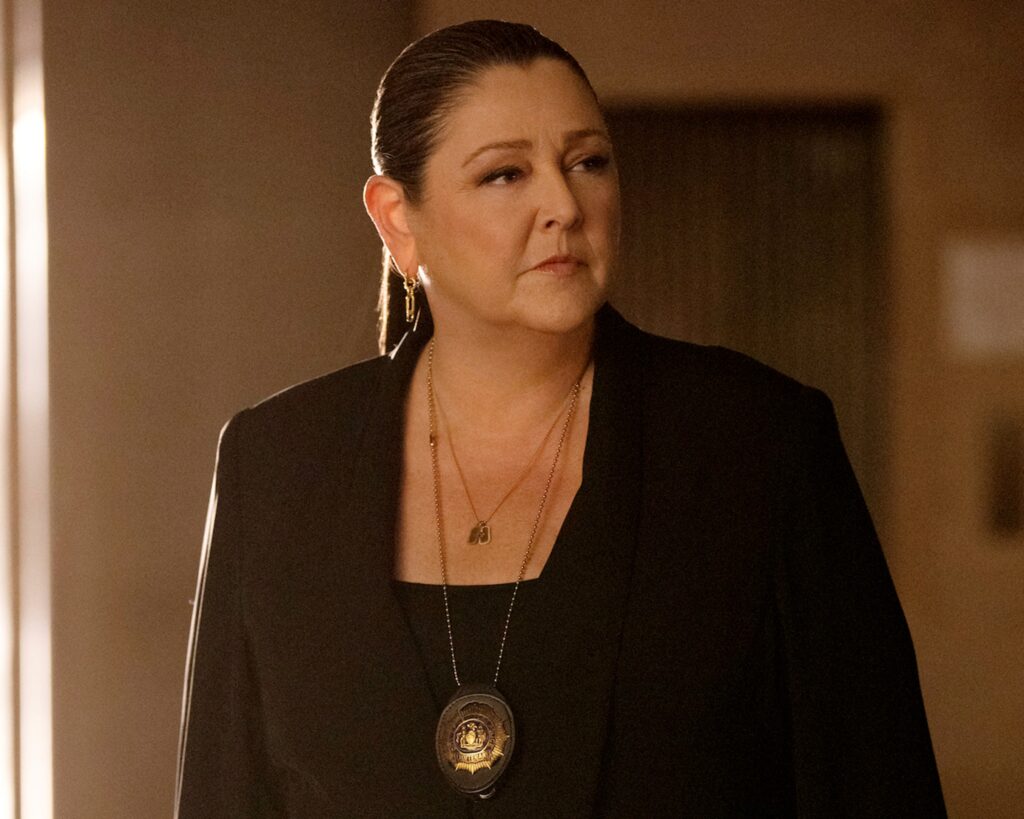
- The Prelude
- So, I had to comment on the little scene with the Lieutenant before the episode got underway. She has clearly got ovaries of steel taking on two on one there. But she gets much props from me for stepping up to the challenge. It was a little over the top, though, when she threatens to arrest them because they start mouthing off. Buuuut then I thought: “Well, she just saw them assault that poor man so…I will allow it!” Officers have the authority to formulate right on the spot as to whether or not there is probable cause to arrest someone for a violation of law. Since she witnessed the alleged violation, I think her probable cause was solid.
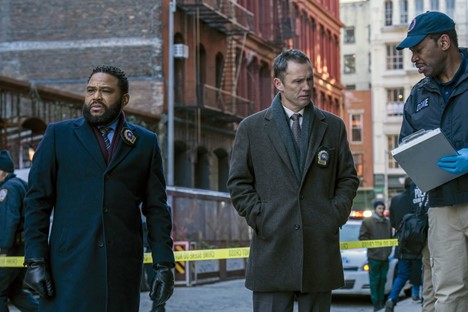
- The Investigation
- One of my favorite parts of this episode happens during the investigation. Detectives Cosgrove and Bernard are all of a sudden in a side street quasi-interrogation with a prominent Senator and his attorney (who magically appears looking coiffed and ready to pounce!). The Senator and his attorney are willing to talk, but only “off the record” to the Detectives. Cosgrove gets an A+++ for his fiery come back of “There is no such thing!” He was absolutely friggin’ right! When you are talking to the police, the Federales, the CIA, or just the “Man”…I don’t care what anyone says, what you say to them is NEVER “off” the proverbial record. The poe-poe aren’t reporters. They cannot un-hear illegal, incriminating, or investigative shit. So, people need to stop spreading this fallacy that what you say to the “Man” can be off the record. Just stop that shit.
- ADA Nolan Price and the Sergeant get down to brass tacks about what to do about this poor young man’s death. ADA Price schools the Lieutenant about the status of the law regarding voluntary injection of narcotics resulting in death. ADA Price does get it right. Under New York Penal Law, CPL ⸹220.46 it is illegal to inject someone, voluntarily or involuntarily, with any controlled substance. If the person who is injected dies as a result of an overdose, then both Criminally Negligent Homicide, CPL ⸹125.10 and Manslaughter in the 2nd Degree, CPL ⸹125.15 apply for prosecution. Both statutes talk about recklessness and negligence in the causing of someone’s death. So, the discussion between ADA Price and the Lieutenant passes Review muster!
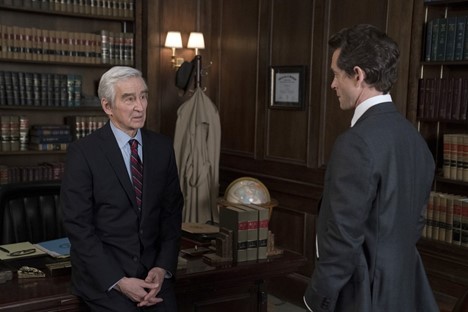
- The Trial
- What I am about to write is controversial…so brace yourself. There is a big misconception about a State’s hate crime statute. Don’t get me wrong, the hate crime statute is important and can serve a compelling purpose. However, the practicality of prosecuting a case as a hate crime at the State level doesn’t always serve to enhance a person’s penalty, significantly. What it can do, is add additional elements a prosecutor has to prove for murder cases. Whereas for common law murder, you only have to prove the basic elements of murder; for a murder prosecuted as a hate crime it adds additional elements regarding the hate crime aspect of the murder to prove. Both crimes may carry the same penalty. Law & Order loves to trot out the hate crime enhancement, but in reality, it is not often used as much as people think it is; not in North Carolina at least.
- When ADA Nolan Price cites a specific case in chambers with opposing counsel, I get excited! Yay! I am going to be able to find this case that the ADA character Nolan Price cites, and I am going to be able to read it and talk about it in the Reviews. However, I am totally disappointed because I just cannot find this case that he cites. People v. Cooney? I found a People v. Coney, 146 A.D. 3d 429, 45 N.Y.S. 3d 36, 2017 Slip Op. 00037 that dealt with an assault case that was designated as a hate crime. I am sorry to disappoint. Would the writers fictionalize case opinions? Or do I just need to look harder? Who knows, but I am totally interested in a hate crime case that holds that the demonstration of actual animus is not required in a hate crime case. This I gotta read for myself.
- The trial starts and all of a sudden, ADA Nolan Price and ADA Maroun lose their first witness. I call bullshit on this. Now, this is not a legal observation, but more of a practical litigator observation. Hell no would you start your trial without having your first, second AND third witnesses on deck to testify! C’mon y’all! What are you both…rookies?
- ADA Price decides to shit on his star witness by not giving a damn that he will get violated by his probation/parole officer if he testifies. No way this would happen. This poor young man’s attorney would be all over this little problem and most assuredly would have bartered with the ADA a planned disposition of their probation case so that they would not have to worry about this young man getting violated. Also, the District Attorney has a lot of power. While probation and parole have the power to revoke and violate offenders, it is ultimately the decision of the DA whether or not they want to proceed with those violations. ADA Price darn well knows he can dismiss or not proceed on those violations! Pish-tosh!
- The prosecution of this evil socialite for his disgusting sex games is not without some basis in reality. The law that the show utilizes to bring this type of case to fruition actually does exist. While these young men may have “consented” to him injecting them with drugs a part of sexual play, the law in New York is clear about such conduct. The resulting death is clearly prosecutable as some type of manslaughter or criminally negligent homicide. However, the big question is can this type of fact pattern provide the prosecution with the requisite “intent” necessary to elevate this misdeed to the murder statute? I think what they use to push the envelope is that the Defendant did this to more than one person. So I liken it to the North Carolina change in the law to 2nd degree murder for those unlawful killings that occur as a result of drunk drivers. This occurred in 2012 in North Carolina and it allowed those actions detailed as follows to be prosecuted as B2 2nd Degree Murder offenses:
“The malice necessary to prove second degree murder is based on an inherently dangerous act or omission, done in such a reckless and wanton manner as to manifest a mind utterly without regard for human life and social duty and deliberately bent on mischief.”
For Prosecutors to achieve this new threshold for those drunken drivers that killed people in the commission of driving while impaired, case law seemed to indicate that the accused had to have been convicted of at least one previous act of driving while impaired. That previous conviction seemed to proverbially put that accused “on notice” that their behavior of driving while impaired was completely reckless and inherently dangerous. So, therefore if they endeavored to do it again, then, from a legal and evidentiary standpoint, the State had evidence of the requisite “malice” that met the definition of the new B2 2nd Degree Murder statute. Applying it to this Law & Order episode, its kind of like what the ADA Nolan Price was trying to do by elevating what would really be considered 2nd Degree Manslaughter or Criminally Negligent Homicide, to Murder; the fact that the Defendant had done this repeatedly so that it was clear he was acting recklessly. Bam! There you have your malice.
So…albeit on a modified schedule, there you have it! The most recent episode of Law & Order, Season 21 reviewed here on the Reviews! Thanks for not giving me a lotta lip about it being…ahem…on a modified schedule. Catch you after April 28th when we can expect the next episode!
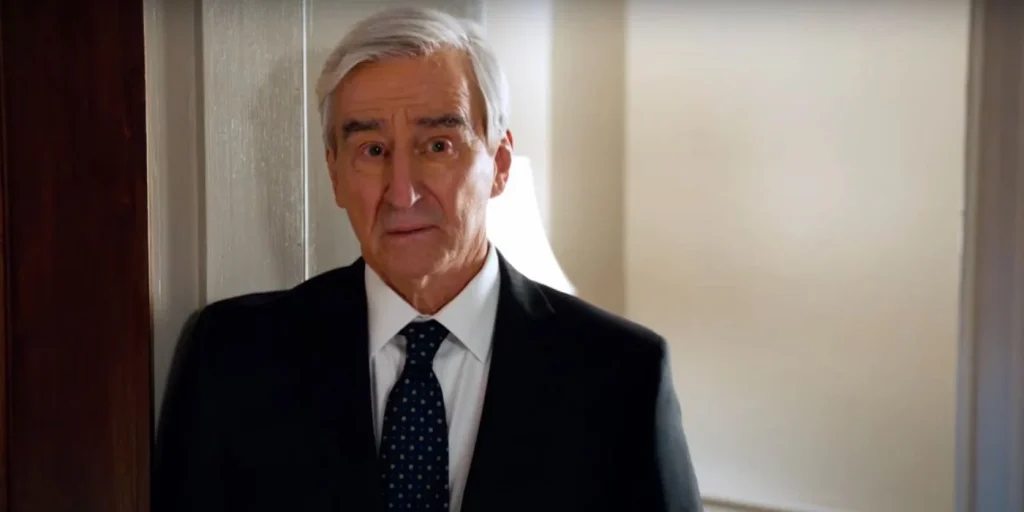
Episode #7:
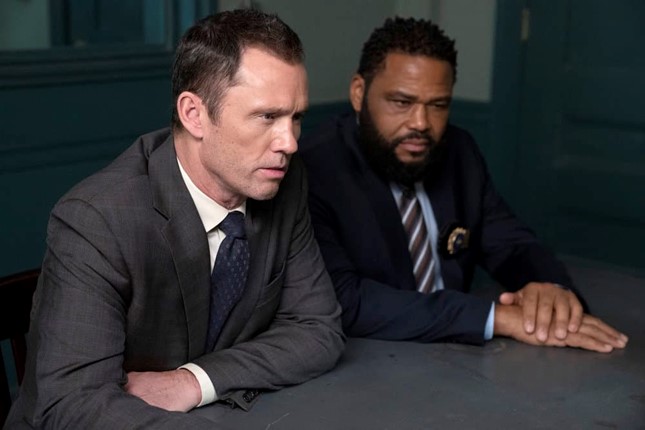
Ahhh, a high-school murder. Law & Order couldn’t stay away from private secondary school in the City. Episode number 7 was a doozy of a lot of legal foolishness, along with getting it somewhat right. Let’s get right into it.
- The Investigation
- Detectives Bernard and Cosgrove get word that some nare-do-well child hacked into the School’s surveillance system and are hot on the trail to get after him. The Lieutenant is absolutely on the mark when she yells at them, as they leave, to get a warrant for this kid’s computer and interview him only with his parents with him. Good job Lieu! Pursuant to In re Gault, 387 US 1 (1967) and N.C.G.S. ⸹7B-2000 and ⸹7B-2101 juveniles have a constitutional right to court appointed counsel and a right to have their parents present during in custody interviews.
- The little snot-nosed busy body wayward child who the Detectives caught hacking into the school’s surveillance system is a real privileged kid. Check out the parent’s digs! When the Detectives are in his room (with the father’s permission) Detective Bernard sees some paraphernalia that is clearly stolen from the school. All of this is on the up and up as the Detectives’ finding items in plain view is not a search under the 4th Amendment plain view doctrine. These items were in plain view, so good work Detective Bernard.
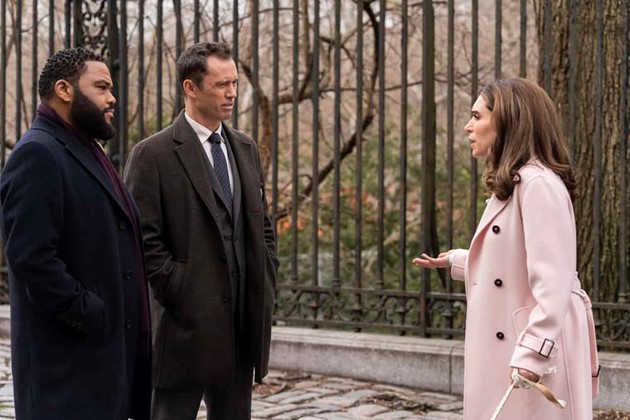
- The investigation leads the Detectives back to the private school house where they want to search the locker of one of their teen suspects. Looks like the Detectives move forward, with the blessing of the school, to search this kid’s locker without a warrant. I believe under the law this is fine. One of the major distinctions in determining the reasonableness of school searches are whether you are dealing with a public or private school. In New Jersey vs. T.L.O., 469 US 325 (1985) the court held that the 4th Amendment’s prohibition on unreasonable searches and seizures applies to searches conducted by public school officials and is not limited to law enforcement. This case clearly talks most about public-school officials being arms of the State and therefore a part of the government for which the 4th Amendment applies. However due to the school environment, the Court in T.L.O. said the 4th Amendment restrictions should be eased and therefore only reasonable suspicion is required for public school officials to search a student’s locker or desk without a warrant. Here, this kid’s private school is allowing the police to search his locker. Therefore, I do not believe that this protection extends to private actions, like private school staff. T.L.O. also gave the go head for public school officials to allow the police to do the search, as long as there was reasonable suspicion.
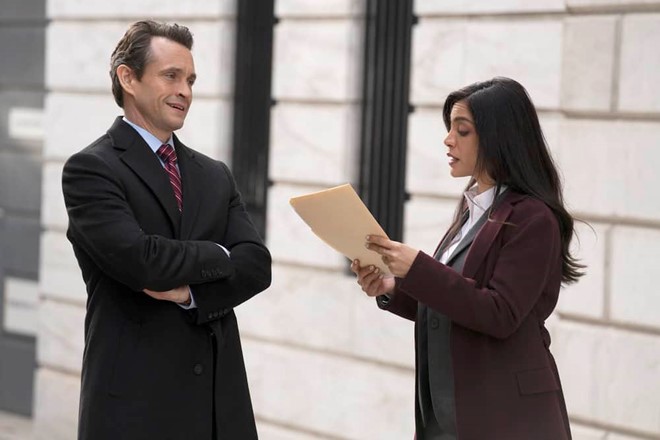
- The Trial
- ADAs Price and Maroun ask the Court to bind the teenage suspect over to adult court from juvenile court. In North Carolina, despite the raise the age changes to the law, seventeen-year-olds are eligible to be tried for certain offenses as adults. The Prosecution can’t bind teenagers over to adult court for just anything. Most of the time there is a distinct list of crimes for which young defendants may face adult consequences. Here, Law & Order properly puts on a hearing where the State must request the Court allow them to be bound over. In North Carolina this hearing is a transfer hearing dictated by N.C.G.S. ⸹7B-2200. After the hearing you see them start to argue over the bond for the juvenile. In North Carolina, a juvenile tried as such is not entitled to bond. So, they could ultimately sit in “detention” until the case is heard for adjudication and disposition. So, Law & Order got it right! Bond did not become an issue until the court determined that the teenager would be tried as an adult. As such, he was then entitled to bond, just like any other adult defendant.
- Okay everyone, I am at a loss as to how to address Law & Order’s cooky, fantastical idea that the father of this poor foolish teenager could be at all criminally liable for his son’s actions. Being a real shitty parent does not rise to being an accomplice to murder. There are so many issues with this that I can’t even begin…so I won’t. Sorry!
- During the trial of the father, even though the kid has “immunity”, he fumbles on the goal line and refuses to implicate his father in his murderous deeds. Law & Order gets it right when the Defense attorney yells out that since the kid fumbled and would not continue to answer questions, his whole testimony needed to be stricken. Its interesting, but we trial lawyers know this rule so well, but where in the hell does it come from? Pursuant to North Carolina Rule of Evidence, Rule 601(b) the court can disqualify persons as witnesses if they are incapable of expressing themselves as to the subject matter of the case. In addition, I believe the Confrontation Clause of the 6th Amendment is implicated as Defendant’s have a right to confrontation of the witnesses against them. If the witness refuses to be fully examined, there is an argument that this is not confrontation, and therefore all their testimony should be stricken.
- ADA Nolan Price tries to manipulate the marital/spousal privilege by getting the wife to testify against her husband to save their son. Wrong! The marital/spousal privilege protects communications between spouses such that neither spouse can testify to what the other told them within the confines of their marriage. There are exceptions clearly. In North Carolina, the relevant statute/rule is N.C.G.S. ⸹8-57. For the most part, communications between spouses within the confines of the marriage are off limits if the State/Prosecutor wants to utilize them against the Defendant. One of the exceptions is in instances where one spouse testifies against the other spouse regarding domestic violence within the relationship. A spouse may testify against the other in a criminal action to what they saw, but not what they heard. So, if wife sees other wife bury her ex-girlfriend in the backyard, wife may testify against wife to what she saw. But, if wife told wife that she killed her ex-girlfriend and buried her in the backyard, wife cannot testify to what wife told her.

I know I didn’t delve into Law & Order’s cooky idea that this asshole parent could be tried as an accomplice to his child’s misdeeds, but it does still deserve somewhat of a comment. One doesn’t necessarily have to be present during the murder to be rendered as an accomplice OR in North Carolina, an accessory either before or after the fact. However, there has to be the intent there. In this Law & Order scenario, it would be really hard for the Prosecution to prove that the father had any intent that his actions would drive his son to murder that particular teacher. His actions as reckless, absolutely. However, it kind of goes back to what I discussed in the Review of Episode #5. If the prosecution could prove that the intent behind the father’s reckless parenting behavior was to breed a child that would commit murder, I think they may have something there, however hard to prove. But it is clear that this father was just a shitty father and didn’t have really any intent that his son do anything else other than stand up to those he believed were bullying him.
I can’t help but extend my apologies for the lateness of this Review. I know I am running a good week behind, but I shall catch up! Such is possible when you are a working practicing lawyer! Until next week…or….in a day or two…
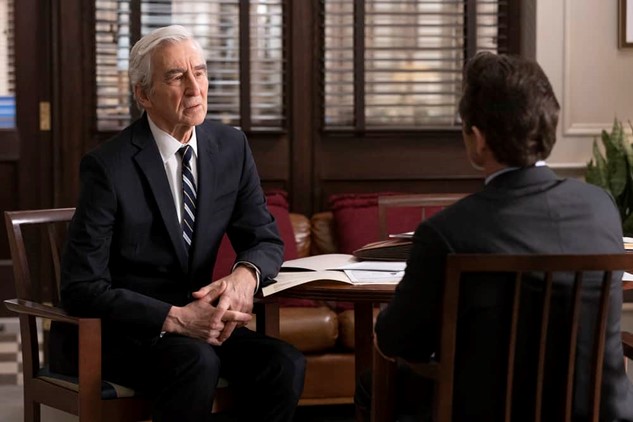
Episode #8:
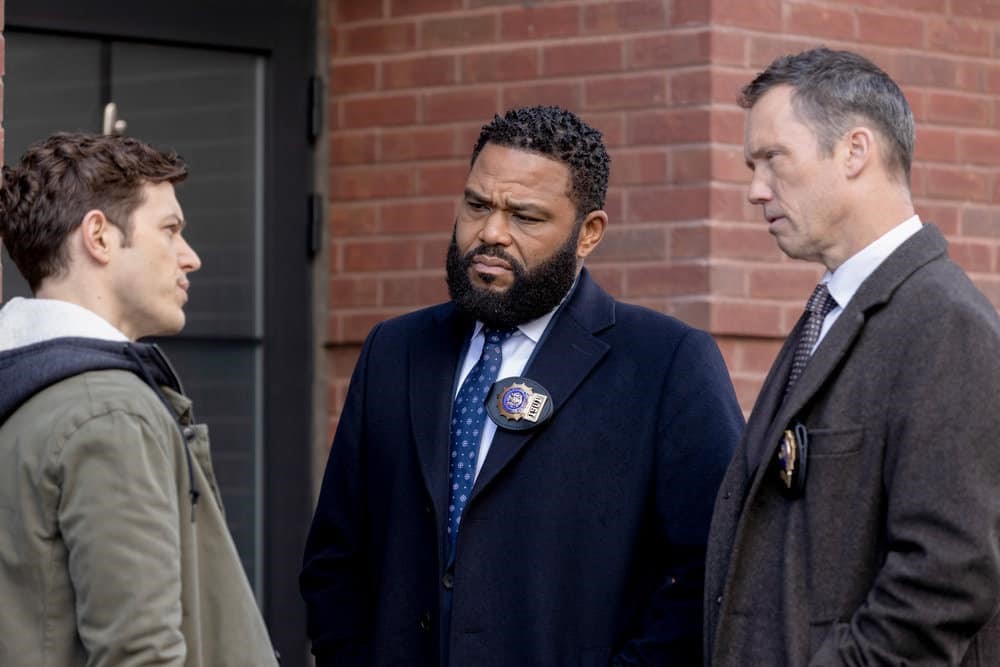
Are we picking up steam yet?? I think so! Here we are, reviewing Episode #8 in the revival of the mothership; Law & Order, Season 21. Episode #8’s legal themes were pretty straightforward and I am getting the feeling that the writers and producers are somehow learning as we go. Hmmmm….are they reading the Review??? Wishful thinking. Let’s get into last week’s Episode #8 Review of Severance.
- The Investigation
- Investigators Bernard and Cosgrove are true gumshoes working that shoe leather by pounding the pavement interviewing all these different witnesses. One witness in particular turns out to be a reporter who was doing an exposé on the victim’s boss. Now, when the reporter learns that his source is dead, he all of sudden blurts out that the victim was his confidential source, and outs why she was communicating with him. Okay, I kind of call bullshit on this one. In North Carolina, like in many other states, in addition to any and all protections from the First Amendment, there are “shield laws” that protect reporters or newsgatherers from the compelled disclosure of any confidential source while they were acting as a reporter or newsgatherer. Pursuant to N.C.G.S. §8-53.11 reporters have qualified immunity from being compelled in any legal proceeding from disclosure of any confidential news source. This immunity is not absolute, but there are some hoops one would have to jump over in order to compel the reporter to disclose their source. Given that most reporters hold this privilege very dearly and essential to their credibility as reporters, I severely doubt this reporter would be so willing to give up the fact that the victim was a confidential source of his to the poe-poe on the street.
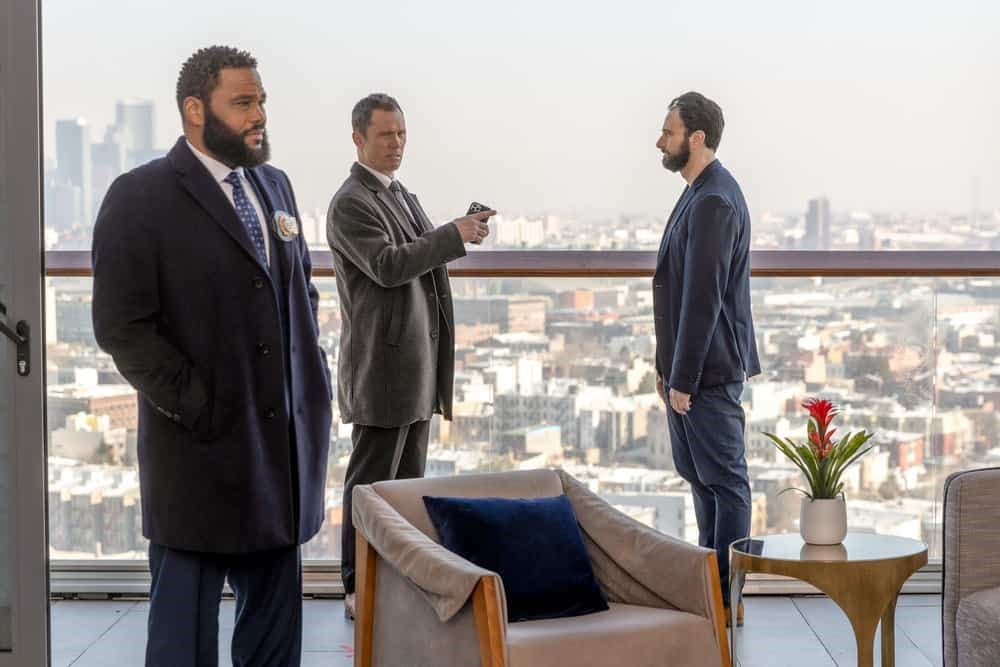
●Detectives Bernard and Cosgrove re-interview a dodgy and suspicious suspect in his home. The suspect is especially touchy due to being sleep deprived and well…just anxious. Detective Bernard notices scratches on the suspects arm that look hella suspicious. Detective Bernard asks the suspect to roll up his sleeve so he can see better. He does it. Totally fine under the law. This is okay because the suspect is not under arrest, not in custody and he consents to this “search” of his person. Even if the perp did not roll up his sleeves, the observations of Detective Bernard are totally admissible as he could see the scratches from where he stood without any request or direction to manipulate the perp’s sleeve. The scratches were in his plain view, therefore his observations of them were not a search under the 4th Amendment.
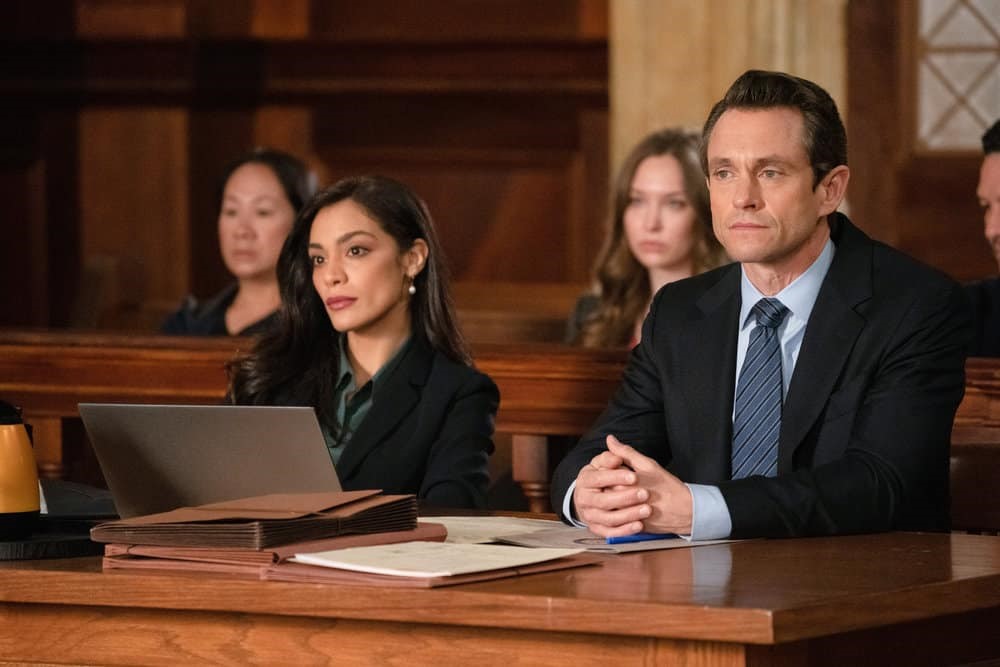
- The Trial
- The Defendant submits voluntarily to a DNA sample when he is taken to the station for a “voluntary” interview. Defense makes a motion to suppress the DNA obtained despite the Defendant’s willingness to provide it on the basis that it was not a knowing and voluntary waiver of his right due to his debilitating migraines. Okay, I do call bullshit on this one. It is true that when Defendants volunteer statements, DNA, etc the giving of the statement or DNA must be knowing, intelligent, and voluntary. Usually, the police make them sign a specific form and statement that indicates that they know and understand their rights to not volunteer this information, and despite that, they are voluntarily giving the statement or sample. But, just because a particular perp has certain frailty, doesn’t mean that they cannot give a knowing and voluntary waiver of their rights in a confession or in the decision to volunteer to give a DNA sample. It is a question of due process, and if the defendant’s will was overborne at the time they confessed. Specifically, was there any state action that made it so that the Defendant’s will was overborne and their ability to resist was severely compromised? It’s not enough that you have a Defendant that is having a migraine at the time he volunteered the DNA. Cases that talk about this are Colorado v. Connelly, 479 US 457 (1986), Haley v. Ohio, 332 US 596 (1948), Culombe vs. Connecticut, 367 US 568 (1961, and Fikes v. Alabama, 352 US 191 (1957). Ultimately, it is always best to NOT be lazy and just get a damn search warrant. The judge got it right!
- Is Havana Syndrome a real thing? Yep, it is! According to a Wall Street Journal article, titled “Havana Syndrome: What We Know”, by Byron Tau (found at: https://www.wsj.com/articles/havana-syndrome-symptoms-11626882951), Havana Syndrome is a set of unexplained symptoms first reported by embassy officials stationed in Cuba in 2016. Symptoms range from pain and ringing in the ears to other cognitive difficulties, Wikipedia Article, Havana Syndrome. Is having this Syndrome enough to warrant an insanity defense should a sufferer kill someone unexpectedly? I dunno….
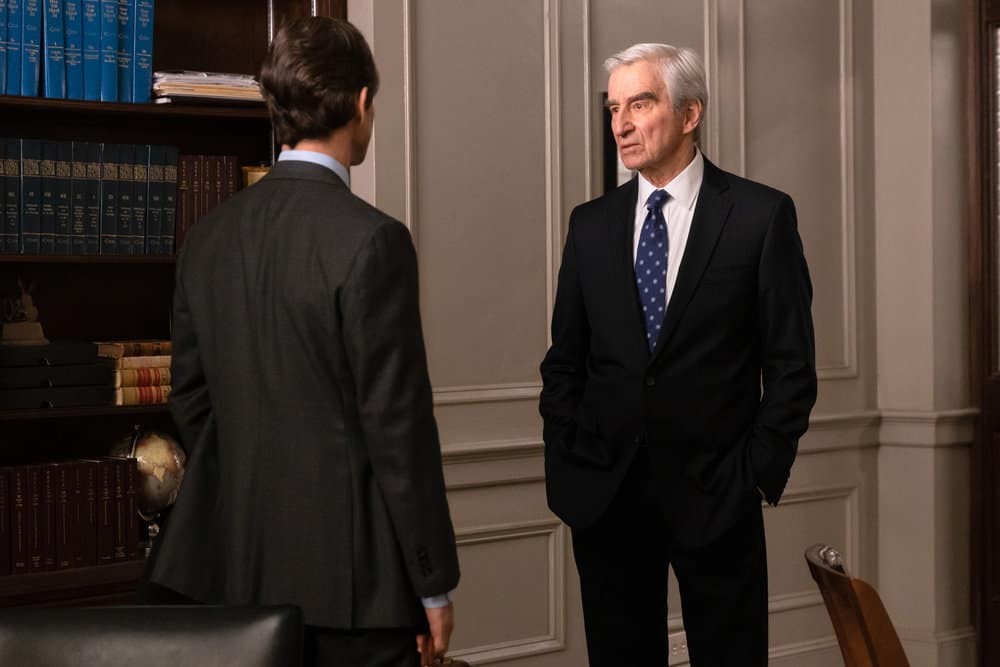
- ADA Nolan Price gets it right when he tells his ole’ boss that there needs to be a nexus between the Defendant’s mental disease of Havana Syndrome and his ultimate behavior in strangling the victim. Loosely, this is right. The standard for a defense of insanity due to mental defect are the following (at least in NC): 1) Defendant suffers from a mental illness, 2) Whether the Defendant is capable or incapable of knowing and appreciating the nature and quality of their actions, 3) and if the Defendant did know the nature and quality of their actions, were they able to distinguish between right and wrong. It is a pretty high bar to meet. There does have to be some causal connection between the mental illness of the Defendant and their inability to appreciate the nature and consequences of their actions. A lot of Defendants who suffer from significant mental illness are nonetheless adjudicated to be sane at the time of the crime. My vote on this Law & Order question is that the jury got it wrong. This cat definitely knew what he was doing. So much so that he tried to hide it when the police confronted him about it….but that is just me!!!
Law & Order the reboot is clearly working the hell out of the insanity defense, aren’t they? I think this is the second (or third?) episode that pulled that one outta their hats! In practicality, the insanity defense is not one that is used or often allowed to be used as much as the public thinks. It is a terribly high bar to meet if you get to the trial stage and try and prove it (which the defense has the burden of doing should they assert it; clearly shifting the burden of proof at the outset). C’mon writers! There are so many other modern-day legal issues that you can explore in this reboot! Insanity has been around for a long time….let’s get some new paint on that old canvas…shall we?
However, all in all, it was an enjoyable episode. The best part for me, as a litigator was the DA Jack McCoy schooling ADA Price. “ Lawyers who need to be right lose more cases than those who don’t.” If you are a true trial lawyer, and I mean a TRUE trial lawyer, you will never be one to count your wins vs. losses or brag about how many times you hustled to step into the courtroom to try a case. The true litigator knows that trial is always the last resort and that most of the magic and skill of being a litigator happens when you never have to step foot in the courtroom, to begin with.
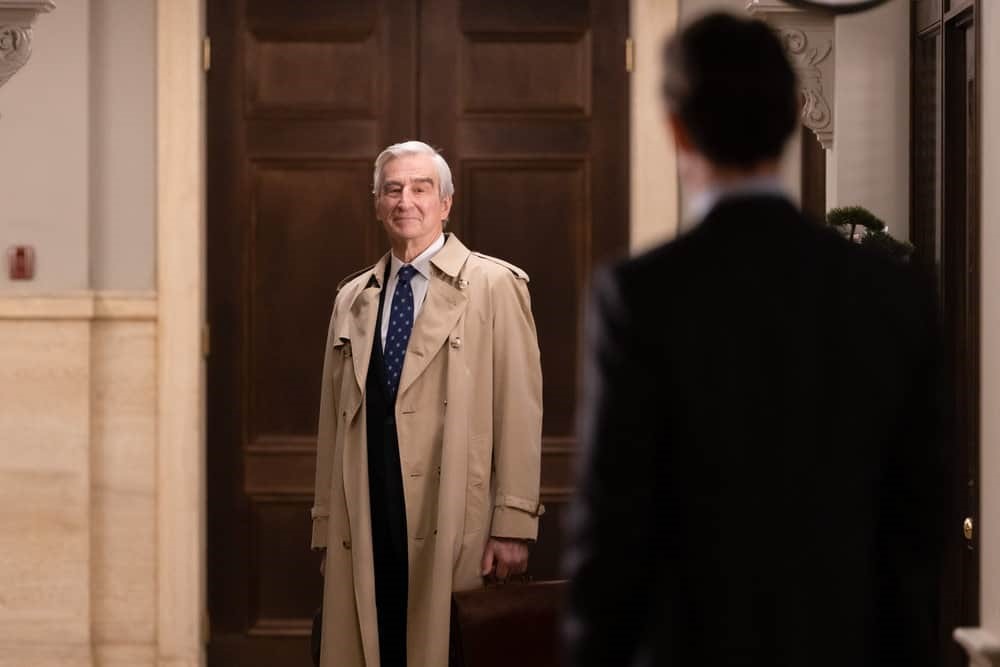
Episode #9:
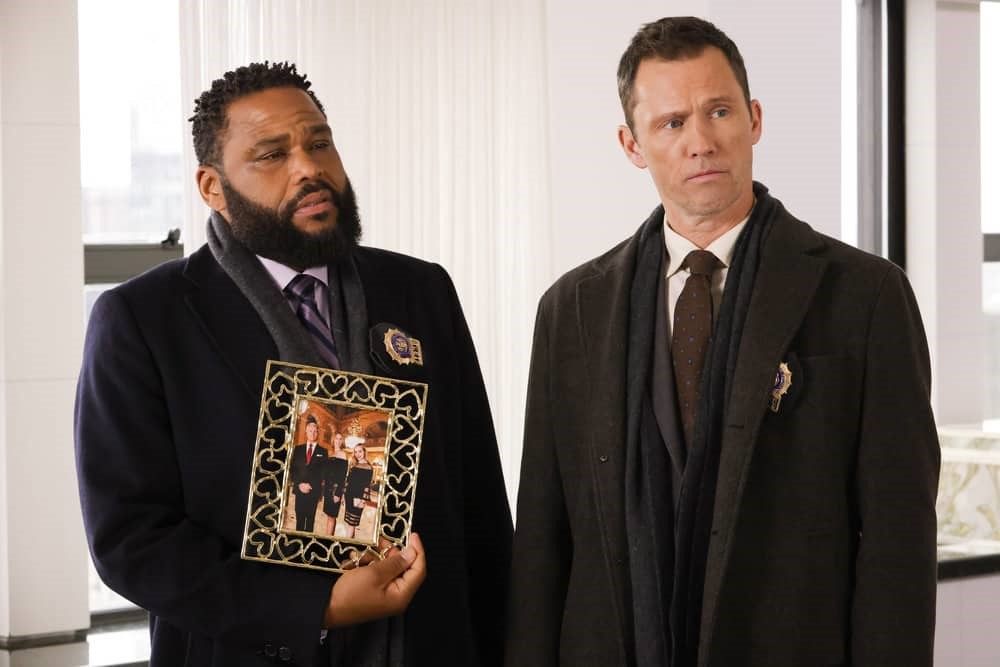
Looks like the reboot of Law and Order is getting another season in the fall! Checking out this week’s Review-ed episode, they ran advertisements for new episodes this fall. So happy the re-boot of the mothership has made it to another season. Here comes season 22! Looks like we have a couple more episodes before we have to wait until the leaves turn to tune in again. I cannot complain, it gives me a moment to catch up! Here is the next Review!
- The Investigation
- Detectives Bernard and Cosgrove are clearly getting used to one another as fellow investigators pounding the pavement looking for leads and interviewing witnesses. One of the first witnesses they interview in pursuit of this young woman’s murder is her lawyer, it seems. Interesting how this particular lawyer has seemed to totally forget the premise of the attorney-client privilege. In North Carolina, despite the death of a client, the privilege survives and bars attorneys from speaking about privileged matters (communications between client and attorney) after their client’s demise. See North Carolina Rule of Professional Conduct, Rule 4(c), Code of Professional Conduct (CPR) 268. Turns out this is the case in New York as well. See New York Rule of Professional Conduct, Rule 1.6. Law & Order gets this one very wrong. For shame!
- Of course, we couldn’t go a week without a blatant Miranda violation. When Detectives Bernard and Cosgrove actively are arresting the suspect, they are doing all sorts of manhandling and questioning at the same time without one whisper of Miranda. Good thing this poor sap was smart enough (and clearly not too high) to say that he wanted a lawyer.
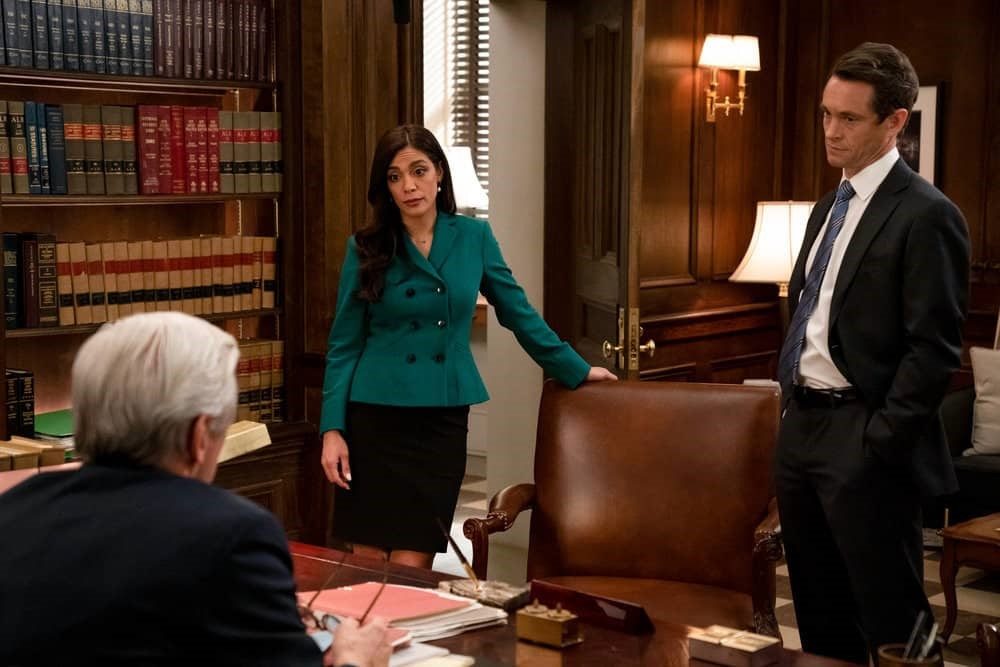
- The Trial
- What in the hell is this shit…the settled insanity defense? Scouring the internet, I found it not to be shit, actually. The definition of settled insanity is basically the premise that the insanity defense could be utilized for those alleged offenders who claim a permanent or settled mental condition due to the habitual voluntary use of intoxicating or controlled substances. So, it allows for the use of the insanity defense for those persons who may not necessarily have a mental defect in the traditional sense, which is necessary for most insanity defenses. This defense requires showing that an offender have a permanent mental condition due to the voluntary abuse of drugs or alcohol that prevents them from knowing or appreciating the consequences of their actions, or understanding or knowing what they did was wrong. Some states have accepted this as a legitimate legal defense in court. Others, not so much. So the make-believe Judge in Law & Order this week was not so off base for quickly dismissing that as a defense available to the suspect.
- Law & Order goes rogue, even by Law & Order standards when the spunky and clearly delusional ADA Nolan Price sets his sights on trying the big bad CEO of the drug company, who got the real killer addicted to prescription pain medication, for murder. Wait…I thought this Law & Order was a riff on the “ripped from the headlines” headline of Anna Delvey, the hustler and con woman who ripped off so many foolish and naïve twenty-somethings a few years ago? Why did we all of a sudden switch to the dramatization of the Sackler family prescription drug scandal? Law & Order is suffering from a little ADHD in this episode. I don’t even know where to unpack this tomfoolery. Here is the long and short: 1) No, the big bad CEO cannot be prosecuted for the murder of a drug-rehab worker, as you need the element of “intent” in order to connect this asshole to this poor person’s overdose. The CEO did not personally GIVE this poor man these drugs. Making them available for sale is not enough to prove the requisite intent or recklessness to make the demon CEO criminally responsible for one person’s death due to overdose. 2) JURISDICTION people! I don’t believe there is a long-arm statute for murder…at least I don’t think so…3) To quote the departed Whitney Houston (who herself was an addict) “That is just wack.”

- Okay, was I the only one that cringed when ADA Maroun decided herself to go rogue, lose her mind, and give her star witness drugs so that he would be able to testify? And THEN the motherfucker lies about it! What a hot mess! Do I even need to quote all the Rules of Professional Conduct that apply, much less the criminal statutes applicable? Okay, everyone….if you are wondering, just for the record THIS IS TOTALLY WRONG, ILLEGAL, AND UNETHICAL!! Let’s just ream some issues off just for funsies: candor to the court, suborning perjury, possession with intent to sell and distribute a Class I substance…the list goes on and on. Clearly, ADA Maroun doesn’t want her job. She needs the late Fred D. (the late Fred D. Thompson) to fire her like he did Serena!
- The Defense gets their panties all in a knot when they learn that ADA Price has a personal history with people who died from drug overdoses. As a result, they move for the ADA to be recused from the case. That is some really stupid shit right there. I am sorry I am not giving the writers this week any leeway here. The Defense forgot that they are in an adversarial system, meaning that the prosecution is trying to put their client in prison. So they are clearly acting in contravention of their client’s interests. The motivation for that is not grounds for recusal. Recusal in North Carolina is mostly based on conflicts of which the District Attorney, in most cases, will often not have any. Pursuant to North Carolina Rules of Professional Conduct, a conflict exists when the representation of one client by an attorney is severely limited or impaired by that same attorney’s representation of another client. The prosecutor’s “client” is the State or the People of that State. Therefore it’s not so easy to discern when the prosecutor has a conflict. In NC, the Courts have ruled that prosecutors cannot be “recused” or removed from cases unless there is an ACTUAL conflict. See State of North Carolina vs. Camacho, 329 N.C. 589 (1991). This usually occurs when an attorney who once represented the defendant is now a part of the prosecutor’s office or would be now the attorney prosecuting the person they used to represent. That is an actual conflict. Just because Nolan Price has an ax to grind, doesn’t mean he should be disqualified as the prosecutor on the case.
This week’s episode was just a little too much for me. Shame on the writers! Focusing on one “headline” is always best and… in the end…the Law & Order way.
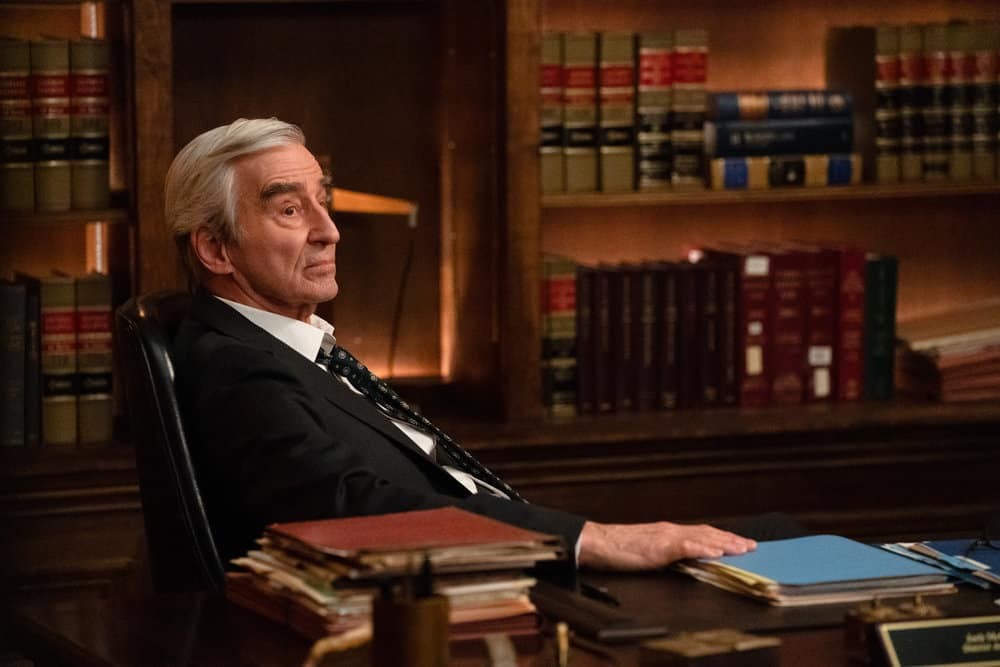
Episode #10: Season Finale
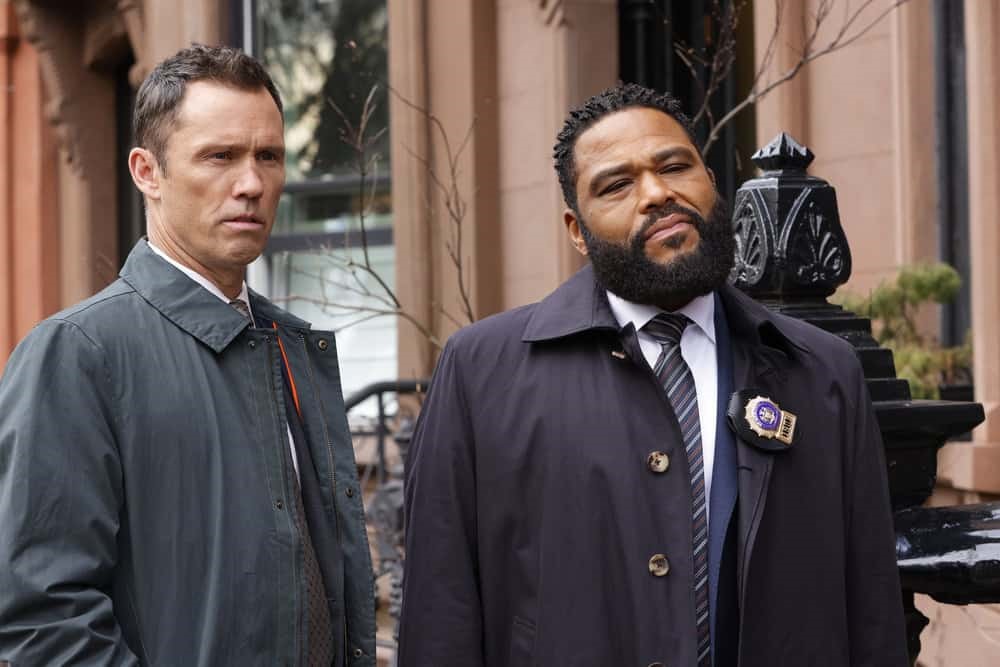
I am catching up as I Review the last episode of this 21st season of the mothership, Law & Order this week on the Review. Law & Order wasted no time in getting on the ever present, but somehow presently present, issue of racism in the NYPD. Let’s get on with it…
- The Investigation
- The first real legal issue we encounter in the investigation part of the episode is when the lecherous benefactor claims to stick out his chest and refuse to talk further or at all without full immunity from the District Attorney. Okay, we have gone over immunity before, and the writers get it right. Such a demand needs to be made of the District Attorney who is the only person who could confer such an opportunity. But, on a practical note, any dope that made a demand like this so early in the investigation would surely get the middle finger from any District Attorney. Immunity is not something DA’s hand out like candy. So this lothario’s request would most certainly be denied and quite possibly coupled with an Obstruction of Justice indictment.
- BTWs….the BEST quote of the season is from Detective Cosgrove in this scene: “Of course she is emotional, she is nineteen! If you don’t like her being emotional than don’t date nineteen year olds!”—He gets a gold star for that one!

- The Trial
- ADA Nolan Price is clearly trying to demonstrate how “woke” he is in his charging decision by declining to charge and try the Defendant with first degree murder. This is totally legal. Charging decisions are the complete and utter province of the District Attorney. That is why the District Attorney is the most powerful player in the courtroom. The misnomer is that the judge is all powerful; that is a red-herring. Law & Order gets it right that irrespective of political pressure, the District Attorney can decline to seek the top count charge for any matter and for any reason. What our system provides as a “check” on this power is that the office of District Attorney is almost always an elected office. Therefore, if the DA’s constituents aren’t as “woke” as the District Attorney (or as racist, on the other hand) then they can be voted out.
- The Defense rightly hones in on the issue of whether or not the officer sufficiently identified himself as such so that the defendant could reasonably believe or know that he was law enforcement. This is important to their defense, as a stranger approaching you and directing you to do or not do something on the street is very much different than when a sworn law enforcement officer does the same. The case law in North Carolina in the context of the sufficiency of the charge for Resist, Delay, and Obstruct (RDO) is instructive in this instance. This is because one of the elements for Resist, Delay and Obstruct is that the offender knew or had reasonable grounds to believe that the alleged victim was a law enforcement officer. The North Carolina General Statute for RDO is §14-223 and State v. Dammons 159 N.C. App. 284, 583 S.E. 2d. 606 (2003) is repeatedly cited as recounting the elements of RDO. If the officer/victim in this instance failed to identify himself sufficiently so that a reasonable person would know or should know that they were engaging with a sworn law enforcement officer, then the State has some real problems. Her response and the reasonableness of it in terms of self-defense hinged on whether or not she could reasonably know that she was interfacing with a sworn police officer. Because if it is not clear who he was at the time, she has every right to defend herself against an irate civilian on the street who is attempting to grab hold of her. There is also the question of whether or not he was discharging or attempting to discharge the duties of his office at the time. All of those things come into play in assessing whether or not it was reasonable for her to use deadly force in that instance. Not bad Law & Order Defense Counsel!
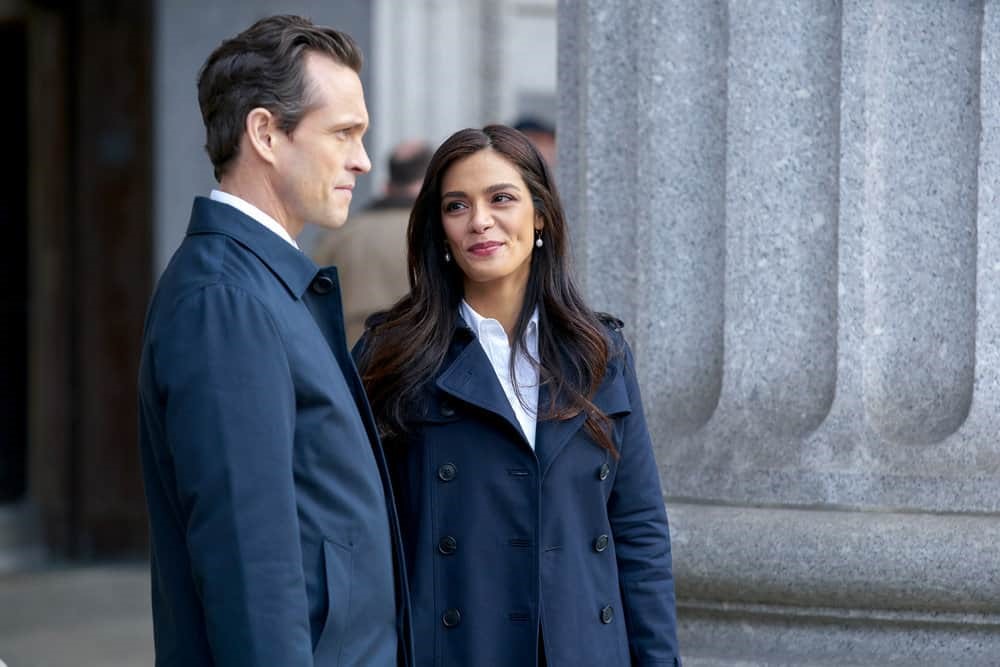
- ADAs Price and Maroun are all a flutter when the Defense “springs” on them evidence of the victim’s previous run ins with Internal Affairs and excessive force complaints. Okay, people, Law & Order gets an “F” on this question. Any evidence that the Defense intends to introduce at trial must be disclosed to the State via discovery in North Carolina. See N.C.G.S. §15A-905. Even if the Defense tried to okie-doke the State, you mean to tell me that the State didn’t sufficiently delve into who their victim was? Usually the State doesn’t want to make a point of investigating their witnesses, but they have to know if there will be credibility issues and forecast possible admissible character evidence on the front end. Evidence of a pertinent character trait of the victim is admissible to show the reasonableness of the behavior of the accused, especially with regard to self-defense cases. See NC Rules of Evidence, Rule 404(a)(2). So of course when a police officer is a victim in this manner, it is absolutely relevant whether or not they could be labeled a “bad cop” or not. Naughty Price and Maroun! They didn’t do their homework!
I felt that for this episode, the Law & Order team were right on the cusp of getting things right, but somehow missed the mark. Well, I think this first turn at a comeback wasn’t half bad for the mothership! I enjoyed Reviewing these episodes and I was back to old times yelling at the TV when I saw some straight tom-foolery a foot. Ahhhh….old times! Can’t wait for the fall when we get to a landmark season 22 for our old faithful, Law & Order!

Season 22: Episode #1
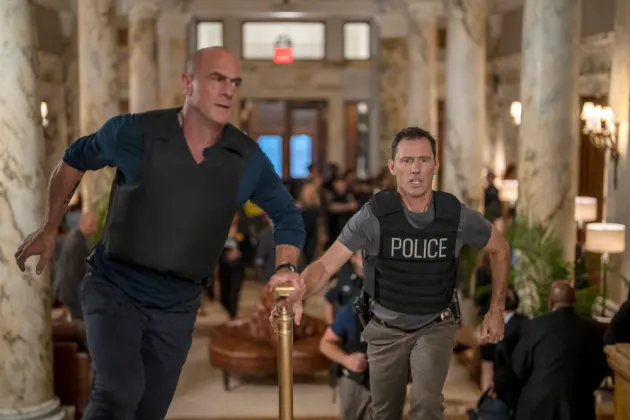
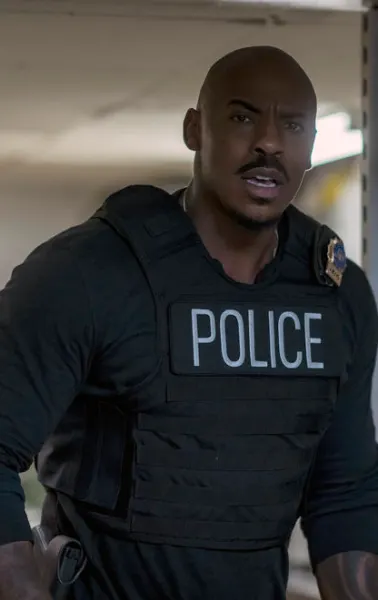
Ahhh…can you feel it? It’s that time of year again! The air is cooler, the leaves are turning a beautiful orange and yellow hue and Law and Order, Season 22 is back! Yes, my friends, Law and Order, the mothership is back for a historic 22 season and that means I am back at work with the Reviews.
We kick off this banner season with a twist and cooperative effort betwixt the Law and Order franchises. Law and Order teams up with Law and Order: Organized Crime and Law and Order: SVU to tell a long ass premiere story. Since I am very faithful to Reviewing only the ORIGINAL, let me swiftly catch you up on the facts so we can get down to the real Review:
Brief Synopsis: Cosgrove is notably sans Detective Bernard (Anthony Anderson) when he runs head on into a murder, watching a young woman getting gunned down in the street right in front of him. Cosgrove feels responsible, so a vendetta is created. Enter new partner Jalen Shaw, a notably tall drink of water cop who happens also to be a lawyer…who would’ve thunk it! Cosgrove and Shaw pay old standby and veteran Detective Elliot Stabler, formally of SVU fame now with his own franchise of Organized Crime, a visit to get the 411 on the possible suspect who is also the subject of an organized crime investigation. They all find out that there is a sex crimes angle, hence SVU and Detective Olivia Benson enter the scene! The investigation yields some Russian bad dude partners with some Russian oligarch to traffic young girls as well as make bombs to blow up things in NYC. When ADA’s Price and Maroun get a hold of it, the Russian oligarch is caught and his slimy partner, who actually killed the young girl because she knew too much, are both in the legal crosshairs.
The Investigation:
- Cosgrove and Shaw are not the only detectives work I will be reviewing this week, so bear with me. Stabler and his young cohort walk up on some low life thug in the street looking for some valuable information. The low life thug looks like he has taken a few criminal justice courses at the local John Jay College and tells Stabler that if he wants to talk to him, he needs to talk to his lawyer. Stabler totally disregards this request and proceeds to threaten to beat the shit out of him and dime him out as a snitch to his homeys on the corner watching; which is tantamount to a death sentence. Can we say coercion? Anything this poor sap tells Stabler is not admissible as a knowing and voluntary statement. Nice try Elliot!
- After Stabler illegally gets this street hustler to go with him, ADA Price and Detective Stabler interview him in the cushy and trendy District Attorney’s Office. Now, Law and Order has a history of making these revelatory interviews with perps happen in the District Attorney’s office with the ADA doing the questioning, but that is all hocus pocus tv magic going on. ADAs are also lawyers and there is a rule that lawyers cannot also be witnesses in the matters they are either prosecuting or defending. Thus, when key interviews of other witnesses occur, ADAs are not to be there…if they also want to be the lawyer trying the case. No becoming a witness Price! Rookie move…but very Law and Ordery!
- The street perp has our murder victim’s phone for some odd reason. All of a sudden everyone is viewing its video contents in ole’ Jack McCoy’s office. Nah! Even though the owner of the phone is dead, getting a search warrant is proper protocol. This is done just in case it is not completely apparent who’s phone it is and therefore whose expectation of privacy is being trampled upon without a warrant.
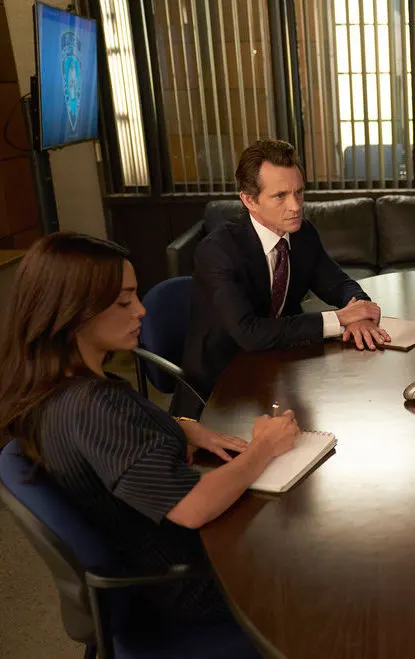
The Trial
- ADA Price hits a major snag with the astute Defense Attorney files a motion to suppress the video found on this young girl’s phone. Law and Order clearly asked somebody about this one because the argument is on point. In order to enter this video into evidence, it first needs to be authenticated; meaning someone needs to testify that the video is capturing what it purports to be capturing and was operating in good working order. There is no requirement that you need the person who took the video to do this. But you do need someone to testify that it IS a video and that it was properly capturing the scene which it depicts the images that you want the jury to see. In North Carolina, Rule 901 of the Rules of Evidence govern authenticity. You can do an end run around this by trying to get those people IN the images to testify that the images are a fair and accurate representation of what is in the video; which he ultimately tries to do by bothering Detective Benson about getting the young murder victim’s friend to testify. However, ADA Price misses the opportunity to argue forfeiture by wrongdoing; a carve out exception promulgated by the Supreme Court in Crawford v. Washington regarding confrontation . If you kill or make unavailable the person who would be able to authenticate, give evidence or provide live testimony about the evidence, then you cannot complain that there is no one around to authenticate the evidence if you got rid of them…in a bad way. In this case, ADA Price missed the boat, and the Judge got it right. Look at that!
- Sam Waterston gets in a tizzy when he learns that Detective Benson has inappropriately put their star witness, the murder victim’s friend, on a plane to Ole’ Canada. He demands that they get her back via extradition. Okay, this is a new one for me. We all know that people who have fled trial or convicted criminals who are fugitives can be extradited from one country to another under that country’s respective extradition treaty. But we are usually talking people that are facing charges, escaped trial, went off their bond on the lamb or got convicted of something and fled whereby becoming a fugitive. We don’t usually talk about getting witnesses back through extradition, do we? So, I looked up the Canadian/US extradition treaty to school myself on this new one. WRONG! Witnesses to crimes are not extraditable under the Canadian/US extradition treaty. So, just because our young girl hopped the border to avoid having to testify doesn’t mean she can all of a sudden be scooped up by the Mounties and carted back to NYC for Sam’s satisfaction. The only way I think this may be a possibility is if Sam wanted to get vindictive and charge her with an extraditable offense.
- ADA Price and Maroun are again out of luck in the prosecution of these slime balls when the main guy they want, Rublev, gets murdered on the street just after meeting with the ADAs. First and foremost, this asshole is in custody…why does he get to meet with the ADAs in some swanky DUMBO (Down Underneath the Manhattan/Brooklyn Overpass) loft? Rikers is just fine for such a meeting. Anyway, he gets iced on the street leaving the ADAs with the last slime ball with a sweetheart deal of 20 years. No one likes this result as the remaining slime ball is…well…very slimy. However, Law and Order gets it right when the slimeball keeps his deal. Cooperation agreements are actually contracts that the State/Government enters into with a cooperating criminally culpable witness. Once the slimeball testified, consistent with his cooperation agreement, the State had to make good on their promise to only give him 20 years for his horrible misdeeds. This is despite the main bad guy going to meet his maker in advance of meeting the potential wrath of the jury. Justice isn’t always pretty everyone.
I had SOOOO much homework to do with this premier “event”. All in all, though, I am pleased with the flow of the episodes and the feel of the new season. I think Law and Order, the mothership, is well on her way to hitting her stride. Hopefully the rest of the season builds on this strong start! And maybe…just maybe….they will tell us what in the hell happened to Detective Bernard!
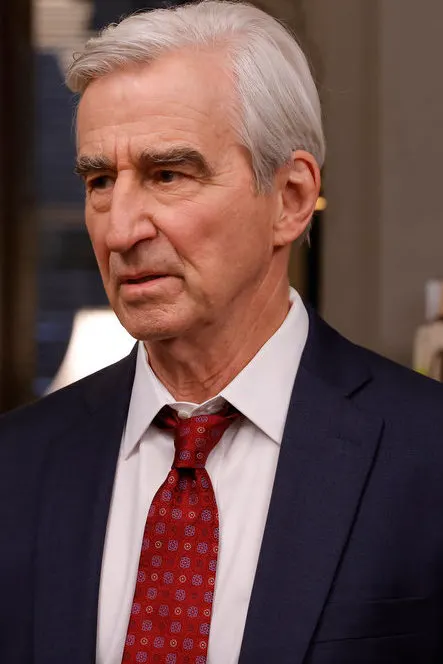
Season 22: Episode #2
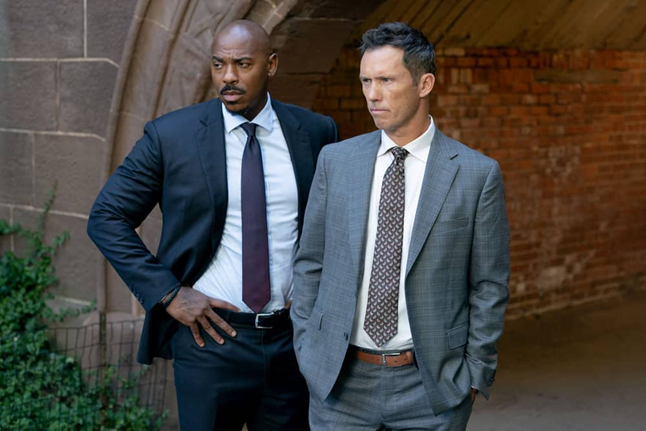
Episode Two dives right into current events by taking on one of the most pivotal and marked changes in American Constitutional law since marriage equality. This week’s episode is not for the faint of heart. Let’s get into it in this week’s Review:
The Investigation
- We get another week of the tall drink of water cop Shaw when Cosgrove calls and invites him to help in investigating a young girl’s murder in Central Park. 5-0 is right on the scene looking for a white man in a ball cap. Not much to go on, is it? But all of a sudden, a white man starts running from where the cops have set up a perimeter. Shaw and Cosgrove give chase with Cosgrove nabbing the poor soul near the iconic water fountain in Central Park. Now, is this kosher? In order to stop someone on the street for investigative purposes, law enforcement must have reasonable suspicion. Is running with a baseball cap reasonable suspicion enough? Terry v. Ohio is the seminal case we all know and love that gives us guidance. Law enforcement may stop or briefly detain an individual if they “observes unusual conduct which leads him reasonably to conclude in light of his experience that criminal activity may be afoot.” Terry v. Ohio, 392 U.S. 1, 30 (1968). Does a white man running in the park with a baseball cap near the crime scene count? I think they just barely make the standard because this poor sap fits the description and is also looking quite a bit shady, I might add. Ultimately, the poor sap actually had the victim’s purse in his possession when they stopped him. Good stop! But, it may be a close one.
- Shaw and Cosgrove get the drop on some suspect that was spotted in the CCTV cameras near the crime scene that fits the description. When they show up at his crib, he gives chase faster than you can say “Gotcha”. Question, though… why in the hell is this building strewn with garbage? Didn’t Guiliani clean New York City up in the nineties and early aughts? Anyway, Shaw gets an unexpected surprise when the suspected perp hits him upside his head with a chair in a stairwell. Was this pursuit and stop okay? Well, after Shaw got hit, you betcha! But before the assault, same issue involving Terry v. Ohio. Can they stop this guy just because you want to question him, and he starts running? I dunno in this case. Here they just wanted to question him. He wasn’t near the crime scene and wasn’t wearing a hat. Your on the line, fellas!
- The good Samaritan witness in Central Park turns out to be more involved than she originally stated when the detectives view some CCTV from a local restaurant where the victim dined shortly before her death with the witness. The Detectives catch her trying to hop a Greyhound bus back to ole’ Texas and detain her. Law & Order has this bad habit of just detaining people that they want to talk to, sans warrant. I guess this has just become a trademark of the show and I just need to let it go……..NEVER!
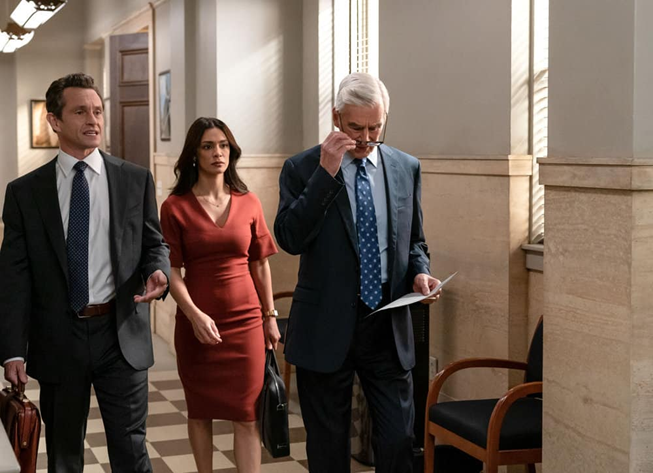
The Trial
- Price and Maroun are off to a bad start when their star witness informs them that she has been advised by her attorney to not testify and that they cannot make her. Initially, I said this was a big fat NO and that the State COULD force her to testify. In North Carolina, the Court can issue material witness orders from the bench that authorize law enforcement to detain necessary witnesses if they are not cooperative in testifying. NCGS ⸹15A-803 dictates what witnesses can be detained via court order and under what circumstances. However, I realized that since this witness was advised that what she did was a crime under Texas law, that she could assert her Fifth amendment right against self-incrimination and decline to testify. Or could she? So, what does the Texas law now banning abortion say? Well, here it is:
Sec. 170A.002. PROHIBITED ABORTION; EXCEPTIONS. (a) A person may not knowingly perform, induce, or attempt an abortion.
(b) The prohibition under Subsection (a) does not apply if:
(1) the person performing, inducing, or attempting the abortion is a licensed physician;
(2) in the exercise of reasonable medical judgment, the pregnant female on whom the abortion is performed, induced, or attempted has a life-threatening physical condition aggravated by, caused by, or arising from a pregnancy that places the female at risk of death or poses a serious risk of substantial impairment of a major bodily function unless the abortion is performed or induced; and
(3) the person performs, induces, or attempts the abortion in a manner that, in the exercise of reasonable medical judgment, provides the best opportunity for the unborn child to survive unless, in the reasonable medical judgment, that manner would create:
(A) a greater risk of the pregnant female’s death; or
(B) a serious risk of substantial impairment of a major bodily function of the pregnant female.
(c) A physician may not take an action authorized under Subsection (b) if, at the time the abortion was performed, induced, or attempted, the person knew the risk of death or a substantial impairment of a major bodily function described by Subsection (b)(2) arose from a claim or diagnosis that the female would engage in conduct that might result in the female’s death or in substantial impairment of a major bodily function.
(d) Medical treatment provided to the pregnant female by a licensed physician that results in the accidental or unintentional injury or death of the unborn child does not constitute a violation of this section.
I am sorry folks, but I don’t see where, in this citation, her actions would be considered illegal even by Texas’ standard. She didn’t perform the abortion, nor did she “induce” it. So, I think she is shit out of luck in asserting the Fifth in this circumstance. But in all fairness, even for this Review, I didn’t strain my neck to dig too deep into this one. Bullshit laws don’t really warrant the respect of close and exhaustive interpretation… in my book. Where Law & Order did make a little sense was their reference to the victim being a minor and the witness taking her across state lines without her parent’s consent. That is more indicative of a legit crime being committed that would legitimize her assertion of the Fifth. But, Law & Order still got it wrong, in my humble opinion. Texas Penal Code Section 20.01 only prescribes this type of conduct as criminal if the child is between the ages of 14 and 17 years old. I think this young lady was 17. Or I may have missed her age. Nonetheless, my conclusion is that this witness is shit out of luck and will need to testify lest she be locked up until she is ready to do so.
Folks, you will notice that this week’s review is a bit skimpy on the… well….Review part. This week’s Law & Order episode was very much designed to tug at the very core of the American wound that is the overturning of Roe v. Wade. The Supreme Court of the United States of America has made a real “hash” out of things with that action, and I believe this week’s episode was designed to really highlight that. Regardless in where you fall in the debate over Roe v. Wade, one thing is for certain; we are now in one big mess (M.E.S.S.) that we will be trying to mop around for years to come.

Season 22: Episode #3
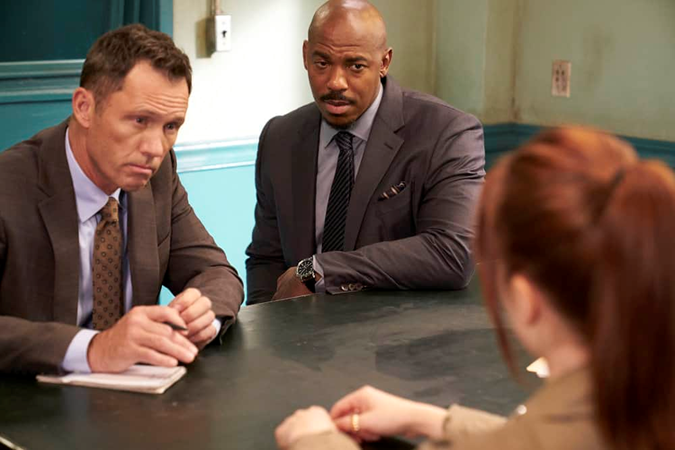
Back again for week three of the mothership…Law & Order! Week three has a lot of outlandish legal surprises….I mean sheer tomfoolery! Let’s get into it.
The Investigation
- Price is in the midst of saying goodbye to what may be a one-night stand when he spots people running from the subway. Price charges into action and right into the chaos when he happens upon a mass shooting in the Canal Street station. With one flash of his badge, he is all up in the crime scene, becoming every bit of a witness. Fine for him as a civilian, but his heroics may mean that he might not ethically also prosecute the case. Lawyers usually cannot be the attorney of record and witness in cases in which they are working. North Carolina Rule of Professional Conduct, Rule 3.7 dictates this premise. However, it depends upon whether or not the lawyer will be a “necessary” witness. So, in this case, ole’ Price would probably not be deemed a necessary witness by running to the scene afterward.
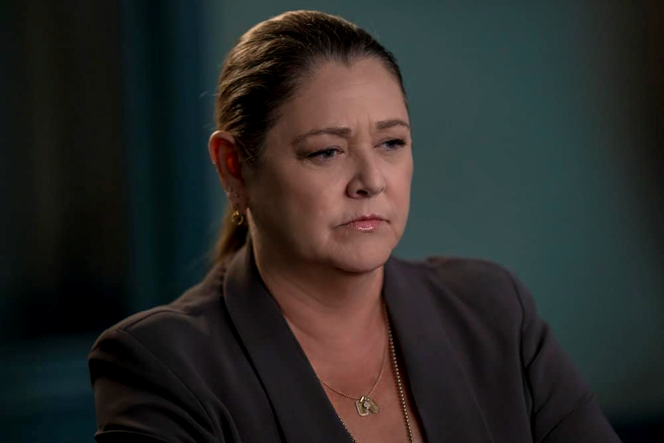
- The investigation leads to a little girl who is hearing impaired in the interrogation room with her annoyingly non-compliant mother. The little girl has uttered the magic words and called for her mother to be present. Does she have a mini-law degree? North Carolina General Statutes ⸹7B-2101 and J.D.B. vs. North Carolina, 564 U.S. 261 (2011) specifically mandates that a juvenile has a right to have a parent or guardian present during custodial interrogations. So, when this little darling asserted (and she did, even with sign) that she wanted her momma present, hands off Lieu! No more questioning! Lieutenant proceeds to “listen in” on the conversation between mom and daughter in the interrogation room. At first, I thought this was a big fat no-no, but after further thought, I don’t think there is any foul there! While the little girl had a right to have her mother present during the interrogation, mom is not an attorney and their communications between one another are not privileged. In addition, they are having their conversation in a place where there is no reasonable expectation of privacy. So, isn’t it akin to putting two co-defendants who have both asserted their fifth amendment right against self-incrimination and their desire to have a lawyer in the back of a squad car, handcuffed, to talk while the dash camera audio is running? Dirty! But I think ultimately, legal.

The Trial
- The bad son-of-a bitch racist killer is caught and sitting in jail awaiting arraignment. But all of sudden, poof! He is gone and the Federales have swooped in and taken him out of the local jail and into federal custody. Oh, no, no, no NO! Let the sheer tomfoolery begin in this episode! Law & Order clearly missed the class regarding separation of powers and federalism! In practice, while the Federales can and sometimes do have concurrent jurisdiction with the States to prosecute certain crimes, they still cannot just swoop in and snatch a Defendant out of a state jail without process. The State caught him, so the State has first dibs. However, the law does allow the Feds to lay a detainer on his ass which tells everyone that they got next. The Interstate Agreement on Detainers is the Federal law, codified in North Carolina General Statutes ⸹15A-761 through ⸹15A-767 that governs this process. So, while the Federales CAN come for a defendant already facing state charges, they usually have to wait until the State is done with them (unless the State says, “Go right ahead, el capitan!”)
- Now this next one is a doozy…I mean a real one. Jack strikes a compromise with the US Attorney whereby he agrees for them to prosecute the defendant federally first, but the US Attorney had to deputize his two ADAs to try the case in federal court….say what?! Okay…is this possible? Yes, this is possible, but sheer lunacy. First, the United States Attorney has a whole cadre of attorneys to try cases for them at the federal level. They have experienced attorneys who have been in and out of federal court, so there is no reason to take a chance on some state prosecutors who have not practiced in federal court bar. Never mind that in order to practice in federal court an attorney must be admitted to that particular federal district court. Have you been admitted Price and Maroun? I think not! United States Attorneys do have the discretion to hire whom they choose, but I am pretty darn sure they have to pass some pretty hardcore and lengthy background checks in addition to be being sworn in as federal prosecutors. Takes a lot more then ole’ Jack McCoy wining and dining the US Attorney over a fancy shmancy dinner!

I kind of feel like Law & Order was stretching just a little (wait…no…a lot!) in this episode with trying to capture a “ripped from the headlines” moment. Tisk, tisk! Don’t try so damn hard, L&O! You are fabulous just the way you are, no fluff. See you all next week!
Season 22: Episode #4
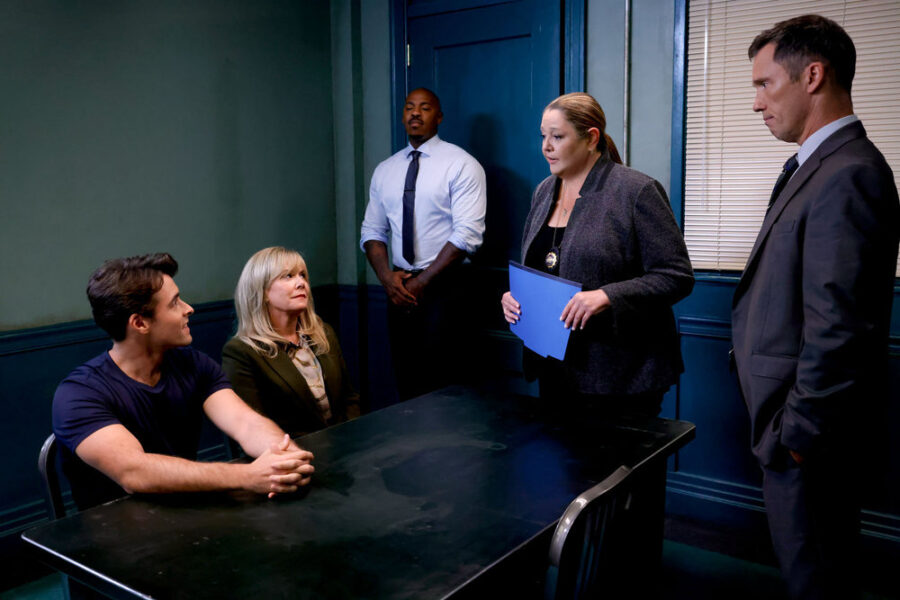
I know I am totally late for the party in my Reviews, but I am one of those people that doesn’t like to give up! So, I am going to pick up where I left off in my Reviews with Episode #4 of Season 22. Week 4’s episode wasn’t too outrageous with the legal fantasies, but some elementary steps could be reviewed. Let’s get into Week Four’s Review.
The Investigation
- Law enforcement have swarmed the scene of the crime, which is a marshy area under a bridge uptown near the Bronx. As Shaw and Cosgrove look over the body of a young woman, a very green and inexperienced patrol officer takes it upon themselves to grab some evidence they have located and bring it to the detectives. Cosgrove rightly gets in her ass about moving evidence prior to it being photographed and documented. He was totally correct. The collection of evidence at the scene is always fodder for motions to suppress and other legal filings against the Prosecution. Items collected must always maintain their chain of custody. “Chain of Custody” refers to the legal premise that the place and manner in which evidence in a criminal matter is handled must be continually accounted for and documented to preserve the integrity of the evidence and its ability to be accurately authenticated and presented in court. It’s important to know that items of evidence haven’t undergone any changes due to outside forces that would affect what they purport to prove or show in court. So, we need to know where things have come from, where they have been, and where they ultimately end up. So, this patrol officer got rightly reamed out by Cosgrove when they moved the evidence from where it was found without documenting it properly. Good teaching Cosgrove!
- Fast forward in the investigation where Cosgrove and Shaw pick up a third wheel when they allow this frenzied old timer investigator work with them due to the serial murderer angle. The three cops approach the actor suspect once again on set. When they leave, they see the actor’s black Tesla which has been spotted at multiple murder scenes. Of course, they want to search it, but have no warrant; which Shaw reminds the old timey investigator. But in their zeal, the old timey investigator swears he sees blood in the car therefore giving the investigators instant probable cause to search the vehicle. Of course, since the actor suspect wants to take off in the car, the detectives cite the exigent circumstances exception to warrantless searches and seizures proscribed by the Fourth Amendment. Well, of course we call bullshit on him actually seeing blood from where he stood. However, law enforcement is permitted a warrantless search of a home or a car if there are exigent circumstances, meaning there is a high likelihood that the evidence sought will be compromised or destroyed if they don’t perform a search immediately, or if someone is in grave bodily injury unless law enforcement acts immediately. True, people. Law enforcement can perform a warrantless search or seizure if they can demonstrate there were exigent circumstances that warranted the normally illegal search. The seminal constitutional cases on this are Terry v. Ohio, 392 US 1 (1968) and Warden vs. Hayden, 387 US 294 (1967). So, the law works on this one, the actual circumstance, though, is bullshit.
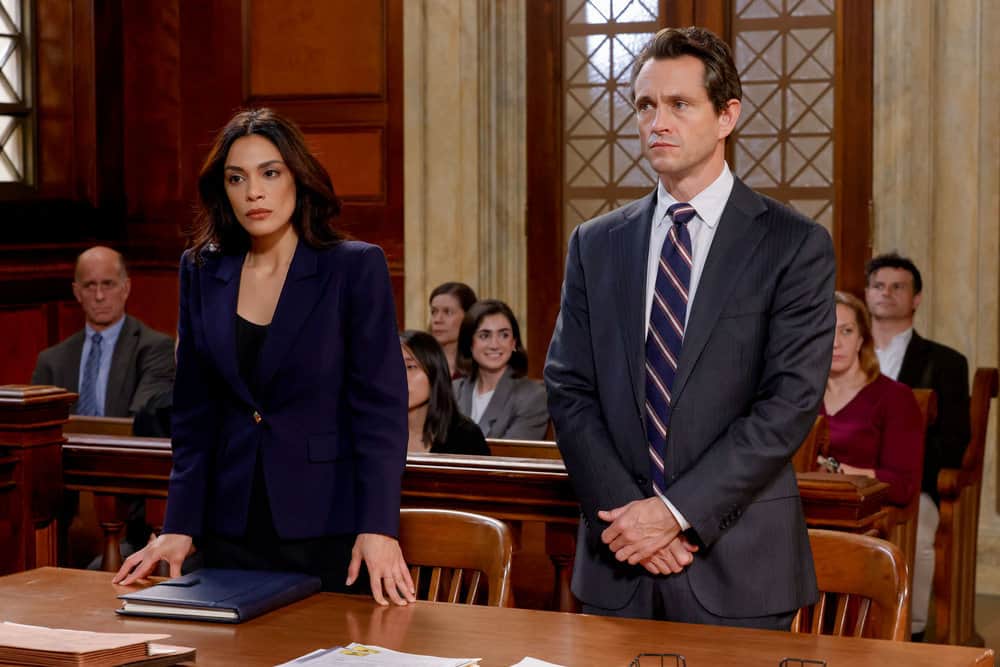
The Trial
- Did you notice how they just glossed over the Mullineux/404B hearing and argument? Pish tosh! This was the most interesting part of the legal gymnastics of this episode and they just gave it short shrift with some off camera hearing and ruling. I call bullshit on this and think the Law & Order writers made a big mistake and missed out on a big opportunity here. The whole premise of the episode was that this was a ruthless serial killer that needed to not only caught but revealed as to who he was. And this would have been a great demonstration of what a prosecutor needs to show in order to try all these murders together and/or utilize evidence of the other murders in the trial of one murder to convict the defendant. Any prosecutor worth their salt would fight like hell to get this evidence in. Mullineux and 404B ( in North Carolina) allows the admissibility of other crimes and bad acts of the Defendant to come into evidence for consideration by the jury NOT for the purpose in proving action in conformity with, but for other valid “purposes” like motive, opportunity, intent, plan, preparation, knowledge, identity or absence of mistake, entrapment or accident. Mullineux and 404B are fascinating evidentiary issues that there can be a whole lotta drama around. Missed opportunity!
- Shocker….the evidence from the car and the bullshit search (based on exigent circumstances) gets tossed. Need I say more…
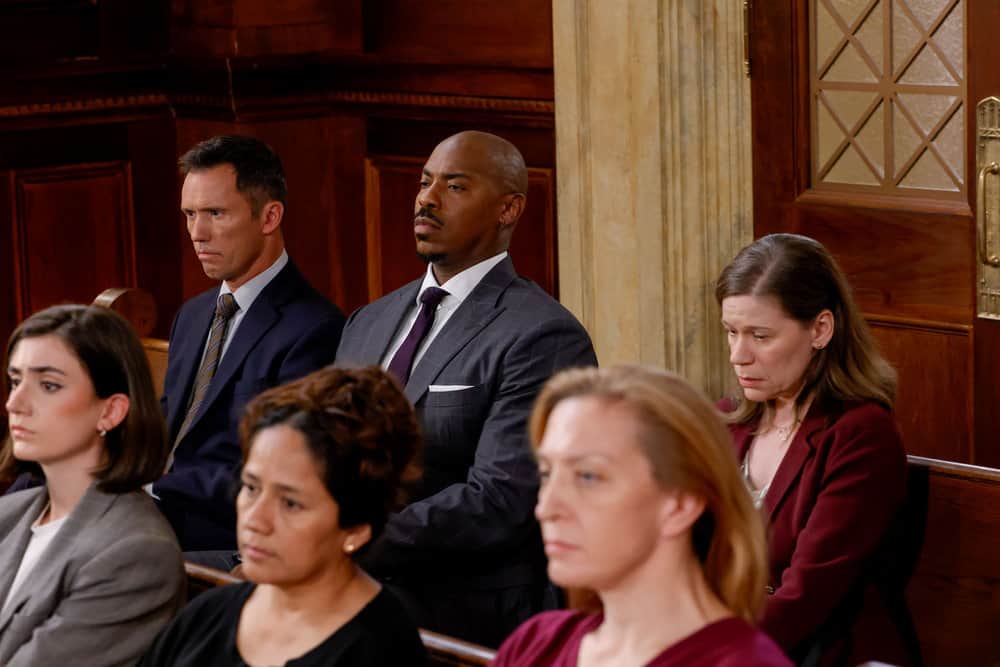
- Cosgrove finds out that his old timey investigator friend is downright dirty and planted evidence in order to secure the defendant’s conviction. This is an interesting premise. Does Cosgrove have the duty to tell the prosecuting attorney about this? If not, should this come to light, how would the court view the prosecuting attorney regarding this information? In the prosecution of cases, law enforcement and the State are one in the same despite the very real fact that they are two arms of a greater whole. Therefore, what law enforcement knows, despite the fact that they may not have specifically told the prosecutor all of what they know, is considered what the prosecutor knows. The knowledge of the police officer is imputed to the prosecutor. So, the prosecutor does not have a defense to the police’s deliberate suppression, or falsification of evidence by saying that the police did it without their knowledge or blessing, and that they had no clue about it. So, the proverbial bell had already been rung once Cosgrove found out about what this detective did. Actually, it was rung when the investigator did what he did, since he was still an active law enforcement officer. The seminal cases on this premise are Barbee v. Warden, Md. Penitentiary, 331 F.2d 842 (4th Cir. 1964) and United States vs Sutton, 542 F.2d 1239 (1976). Specifically, Barbee stood for the proposition that a police officer’s knowledge of exculpatory information will be imputed to the prosecutor. Sutton went a little further in stating that even if the prosecutor had no knowledge of the existence of the evidence, the knowledge of law enforcement must be imputed to the prosecutor. Shame on this detective! So there was nothing that Cosgrove could have done. While his law enforcement General Orders may have mandated he tell the prosecutor about this dastardly deed, the law presumes the prosecutor already knew. What a pickle this guy put Cosgrove in. Cosgrove showed his character and grace (and restraint…this guy had a great bottle of scotch for him!) by unceremoniously kicking this asshole detective out of his house at the end.
So, albeit months later, there you have it! The Review of Episode #4, Season 22 of the mothership. Like I said, I am not a quitter, so even though untimely, I will deliver to you MORE reviews and try and catch up! Until next time!

